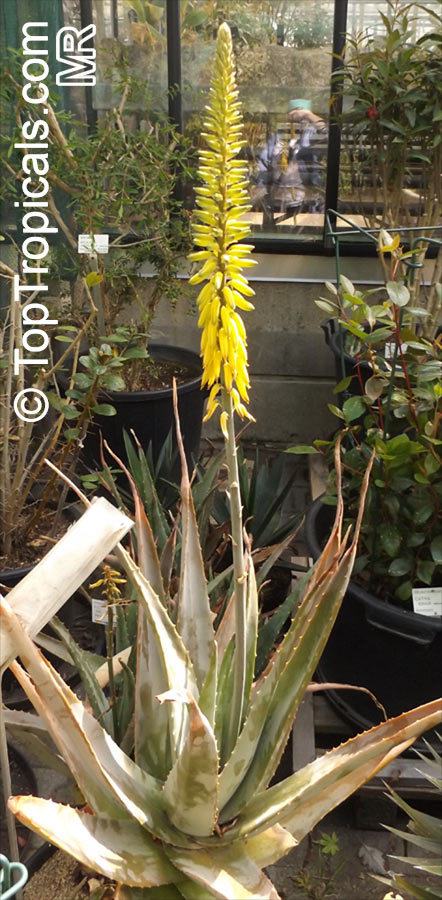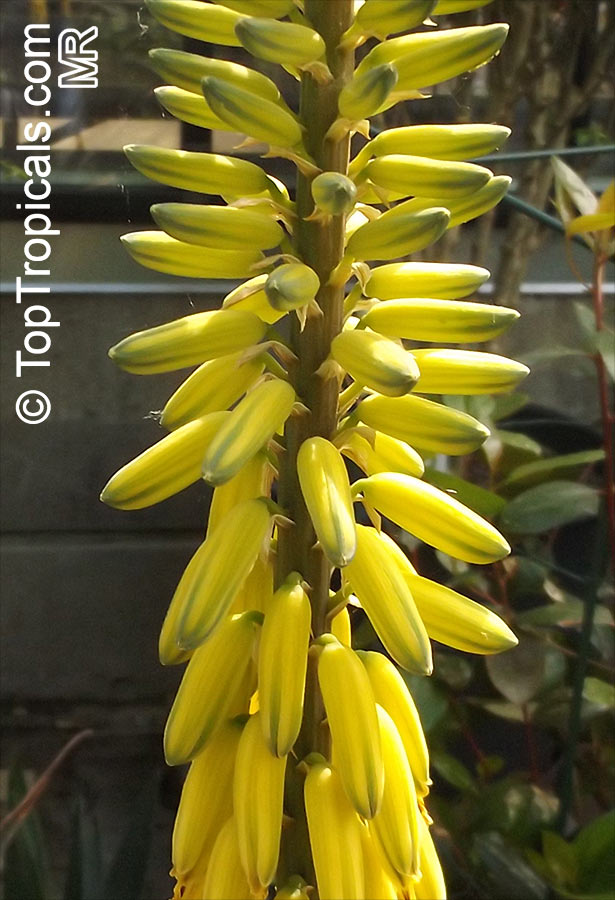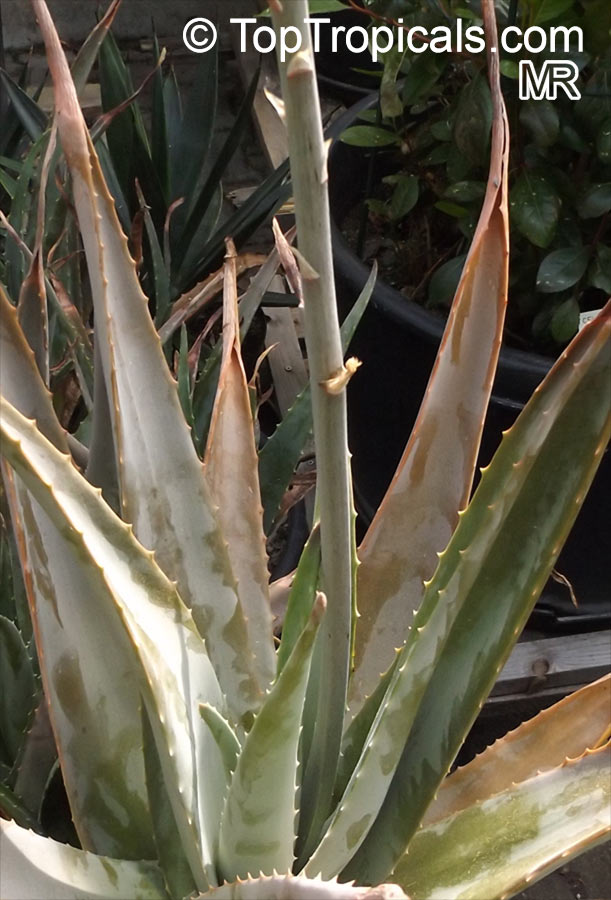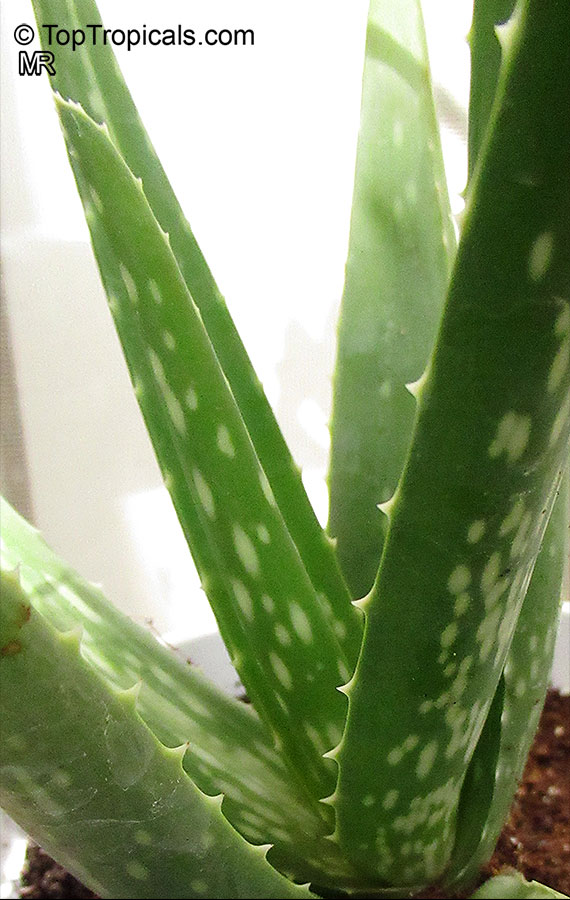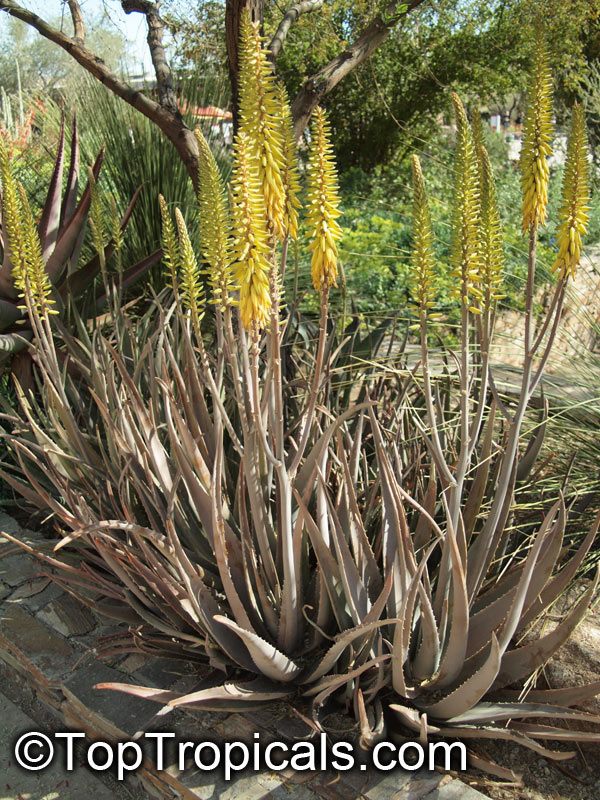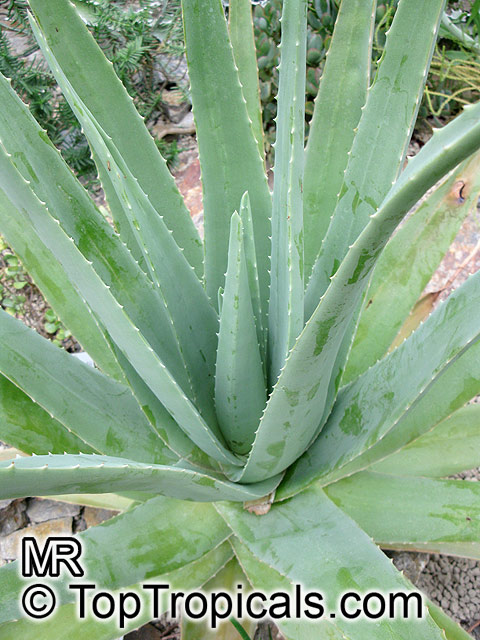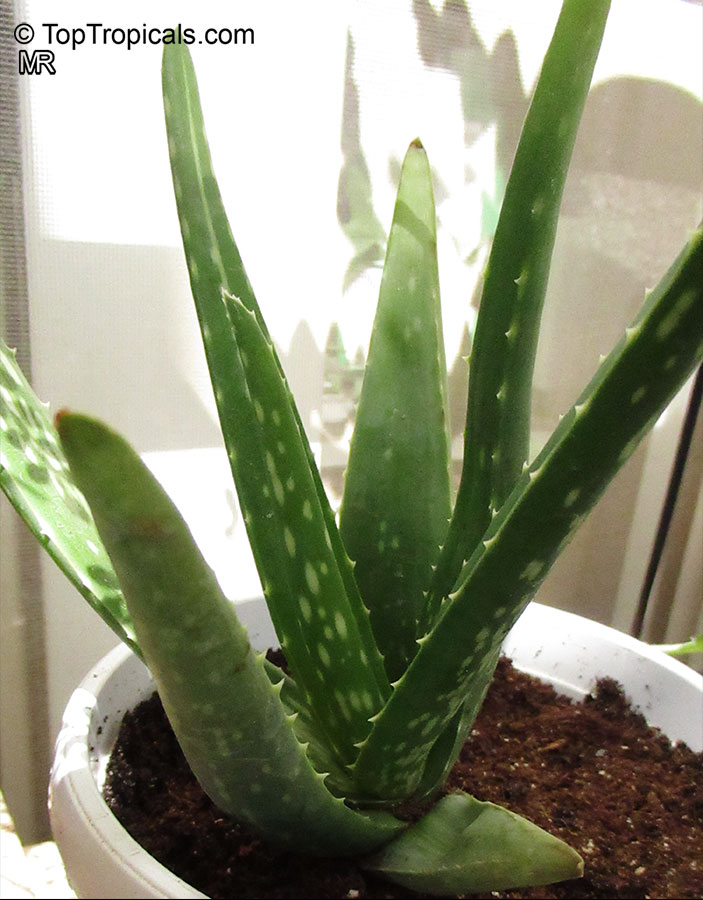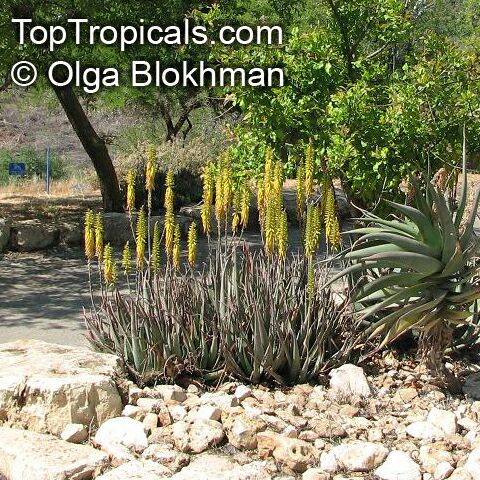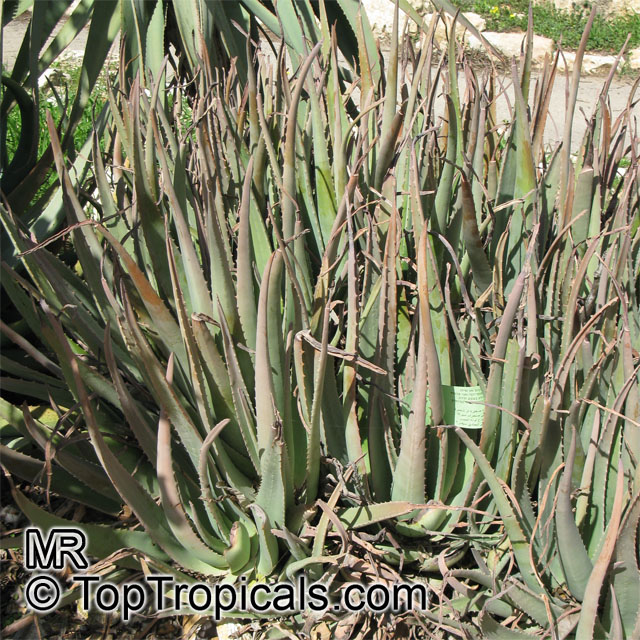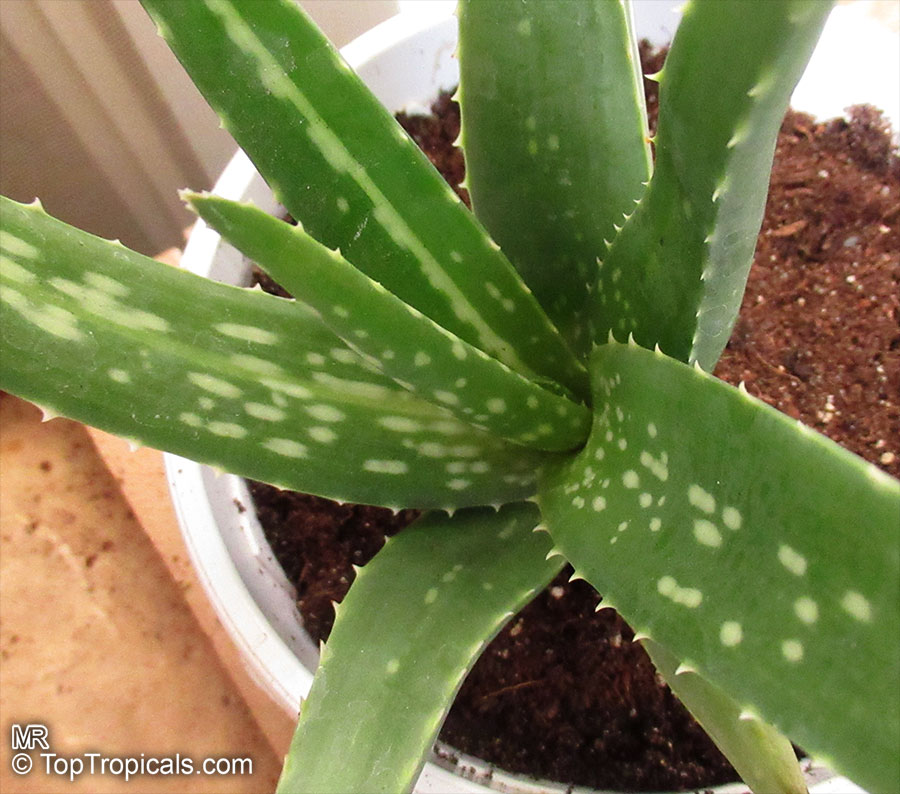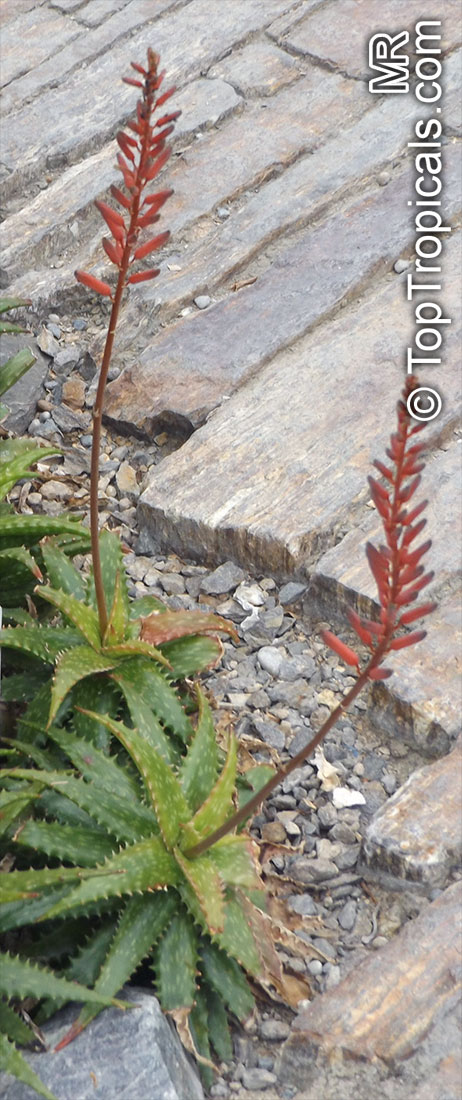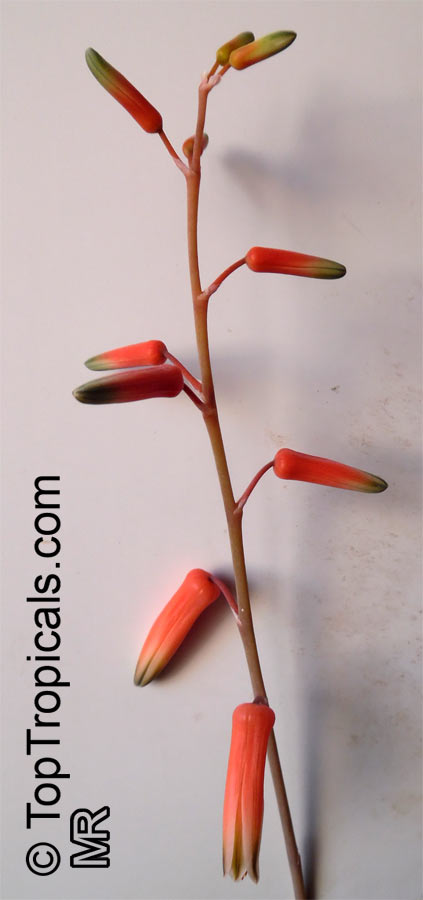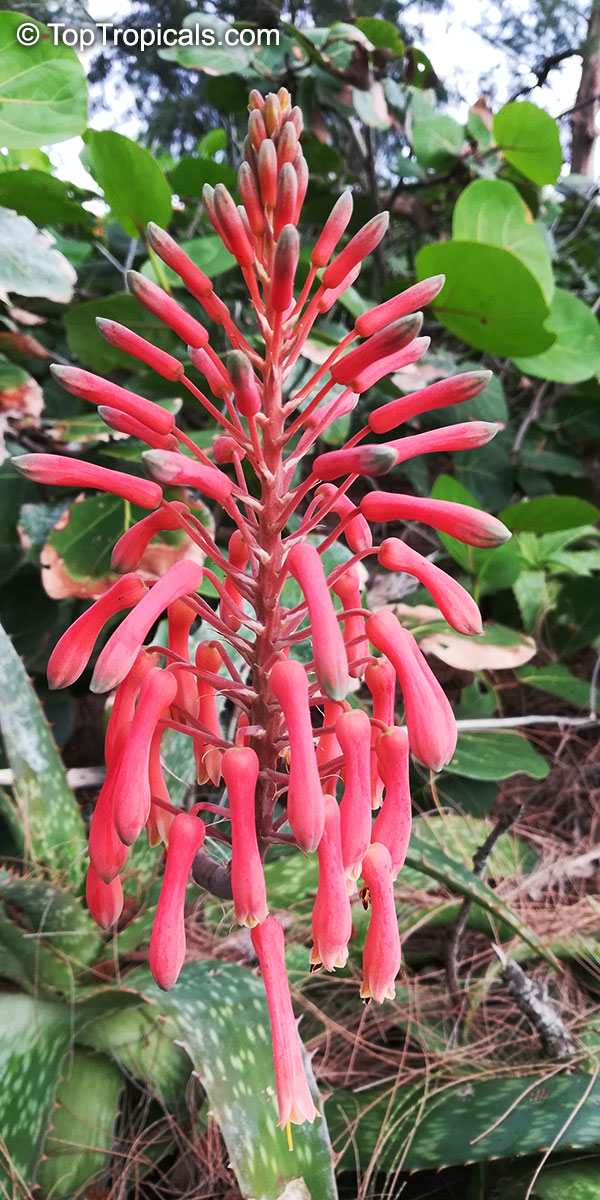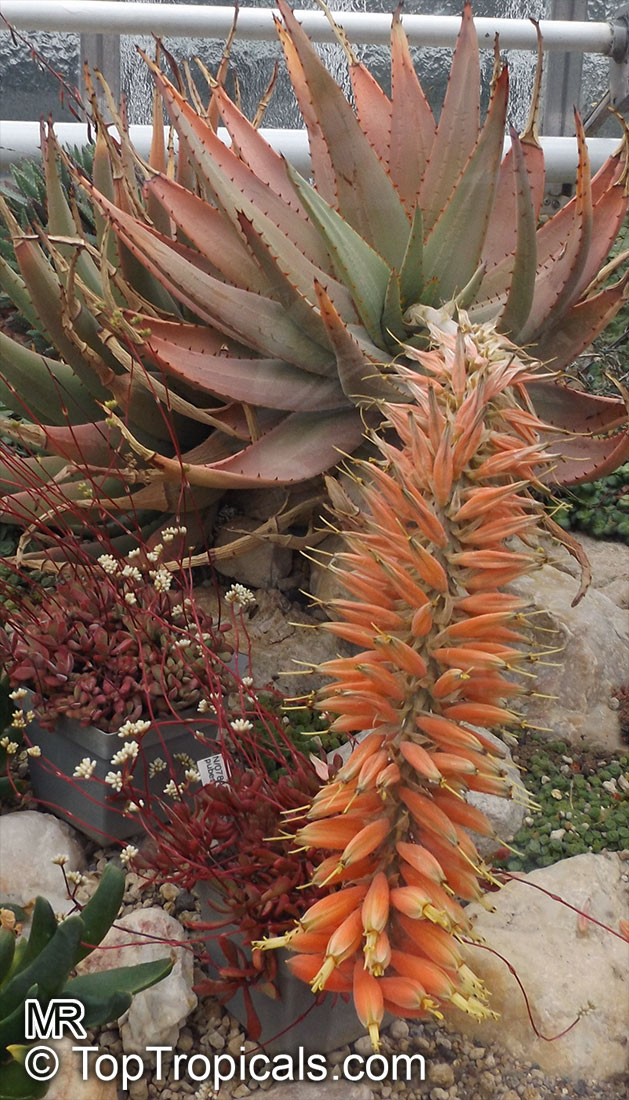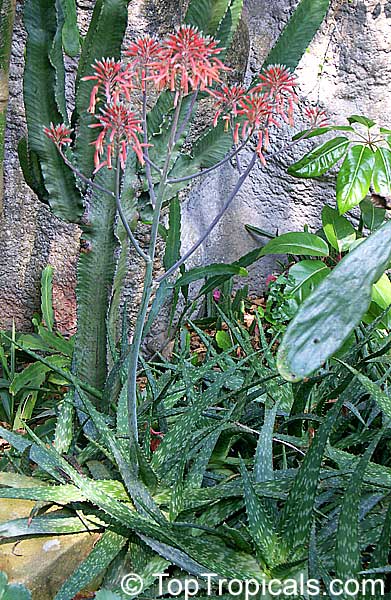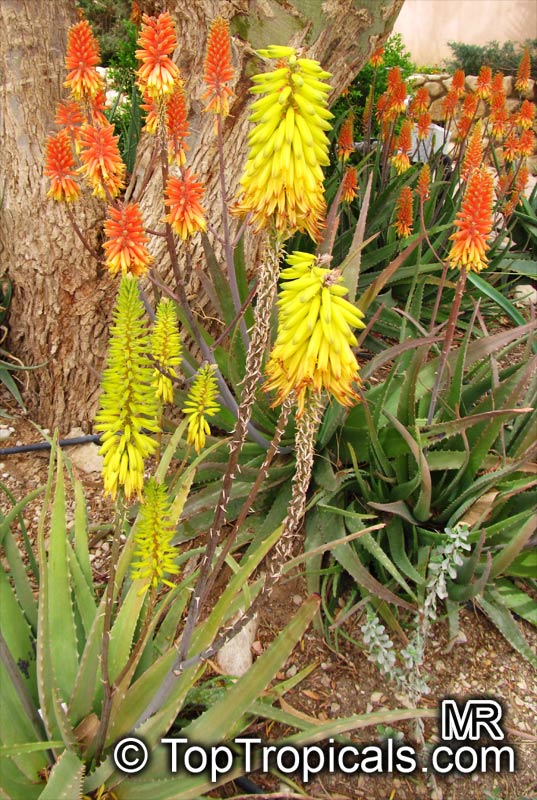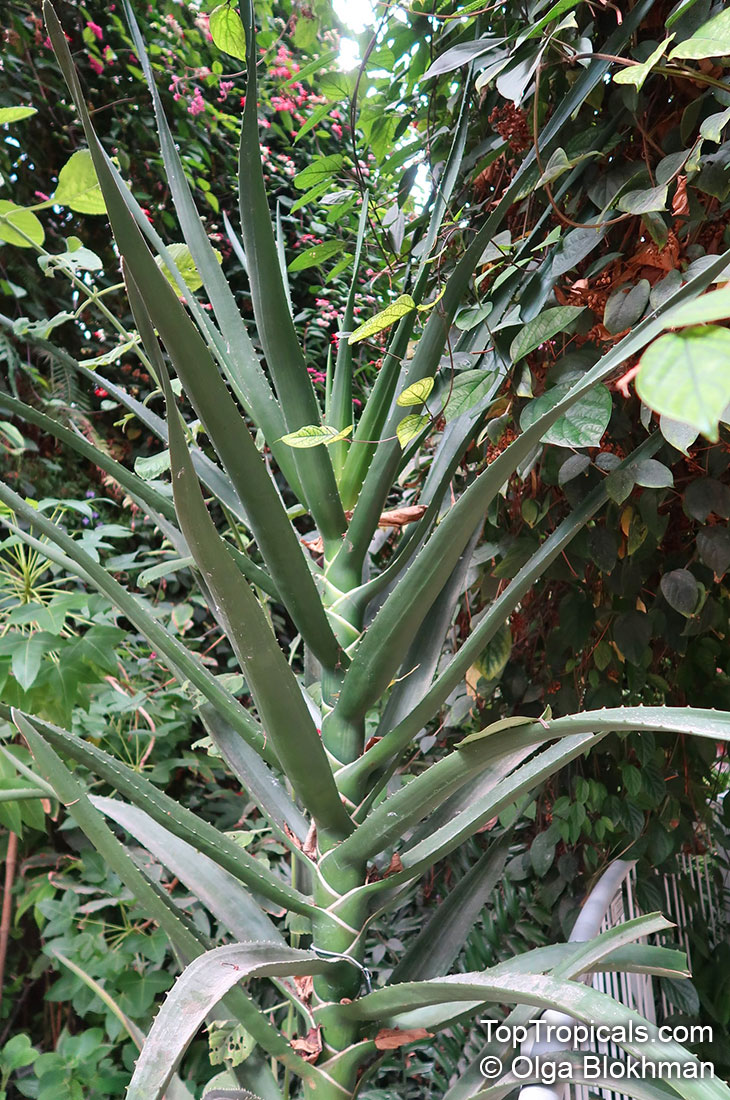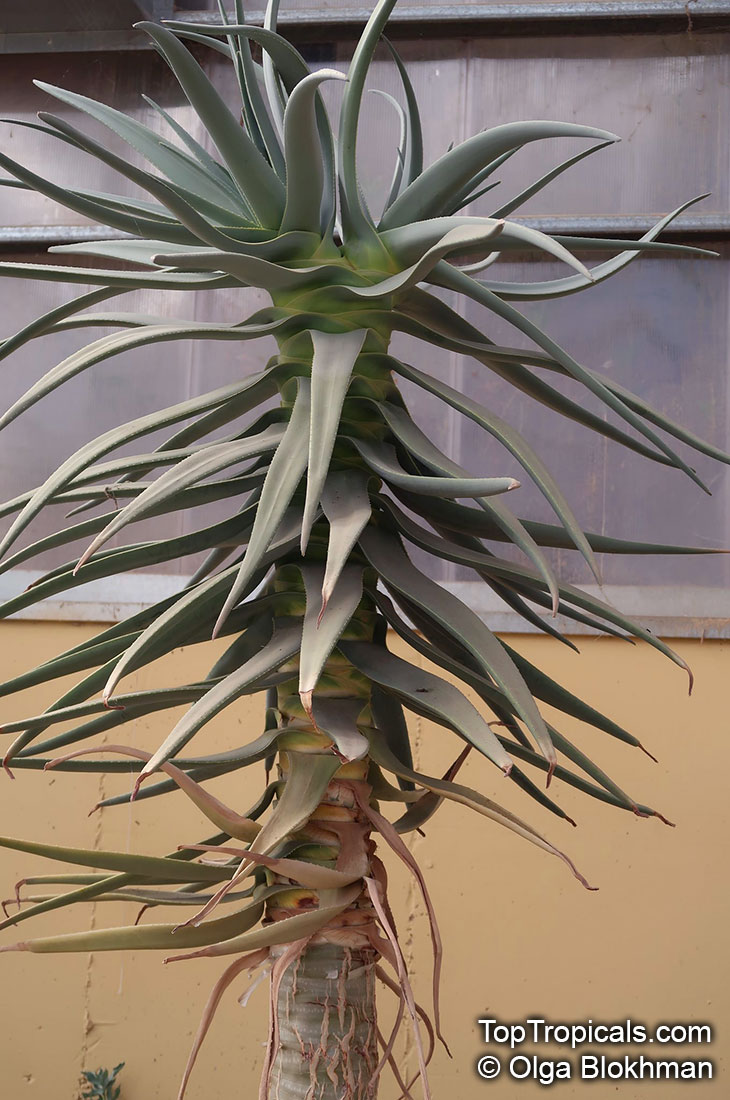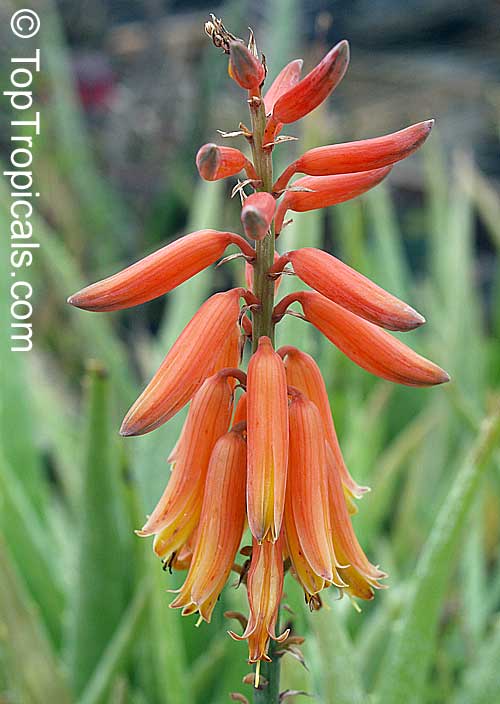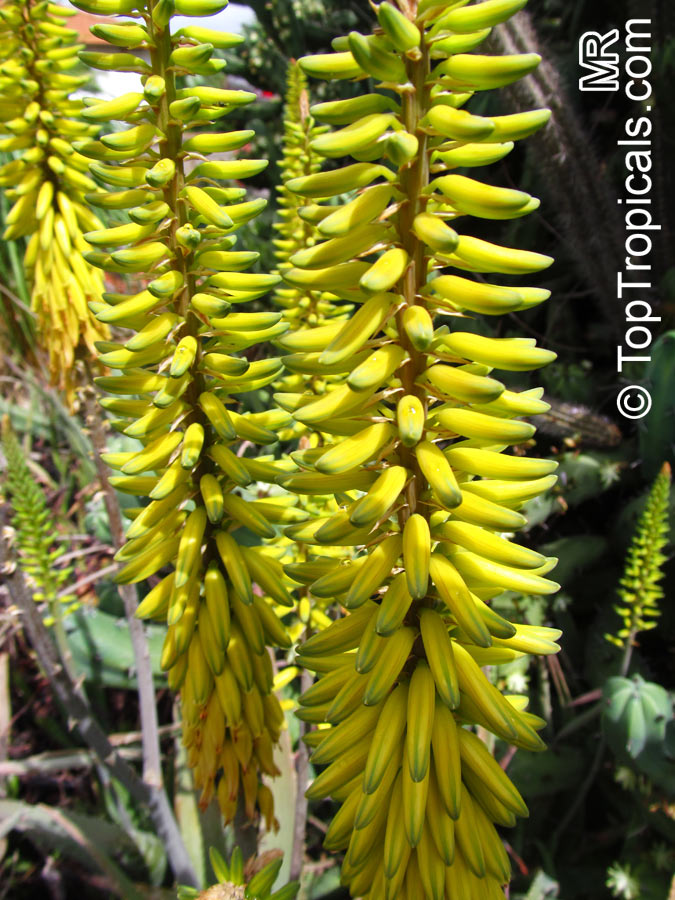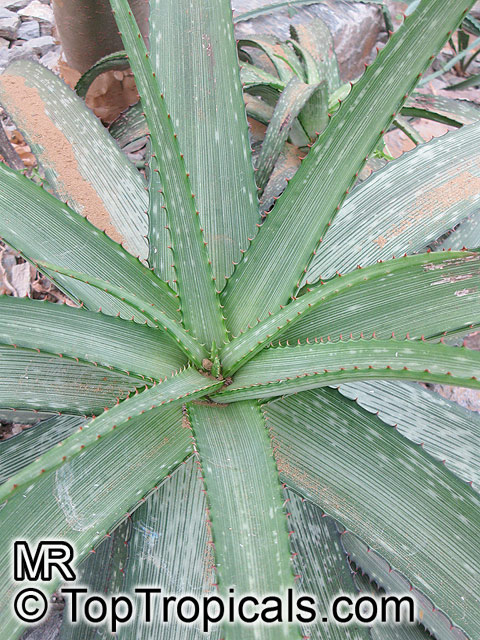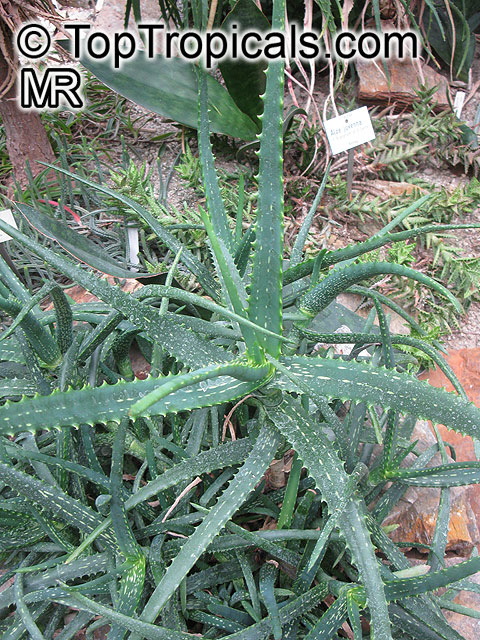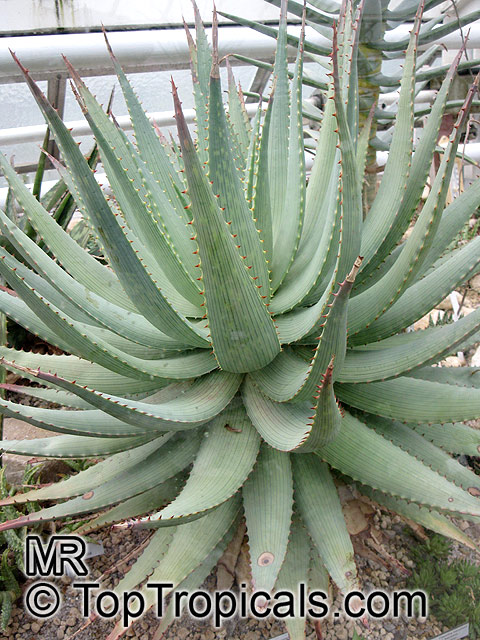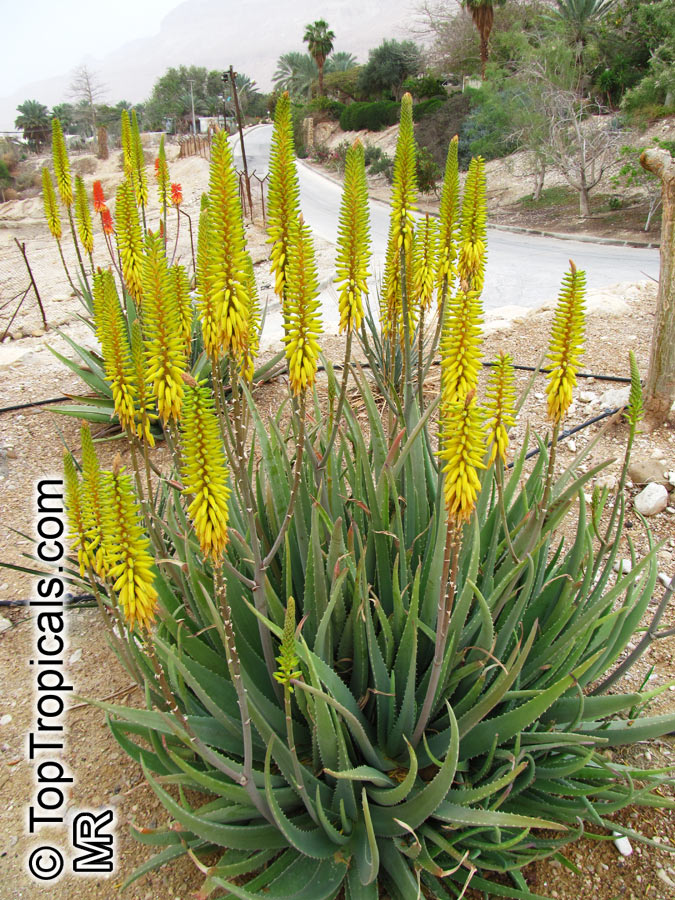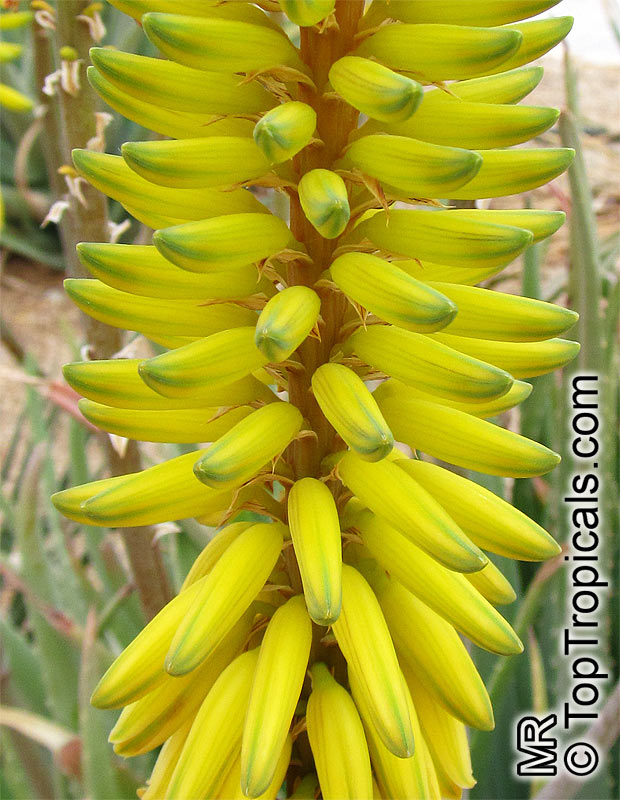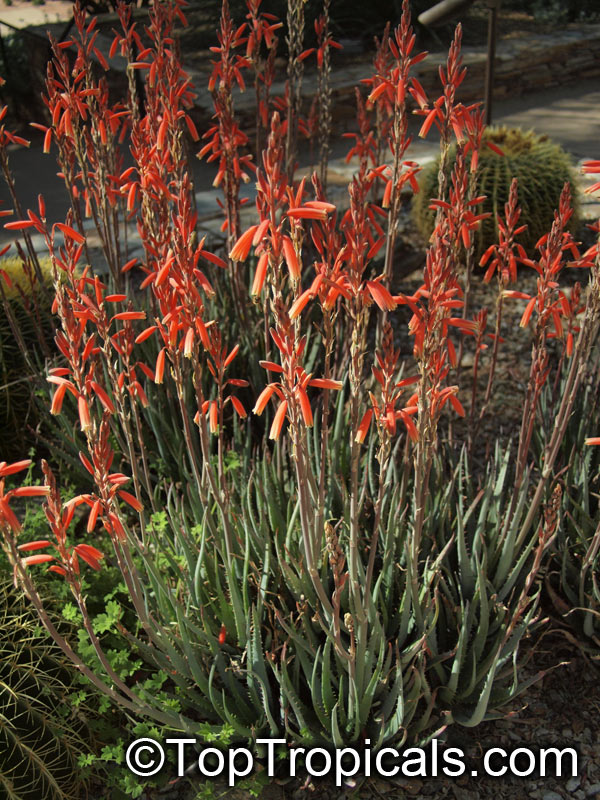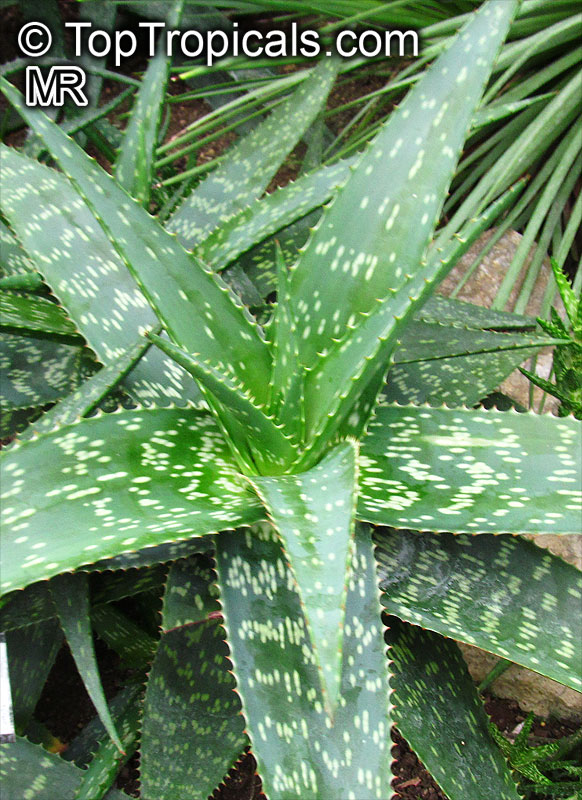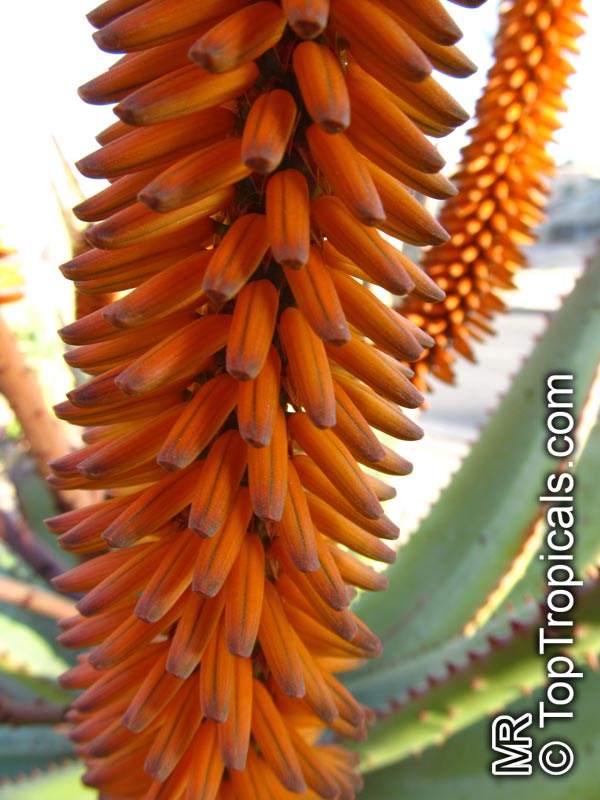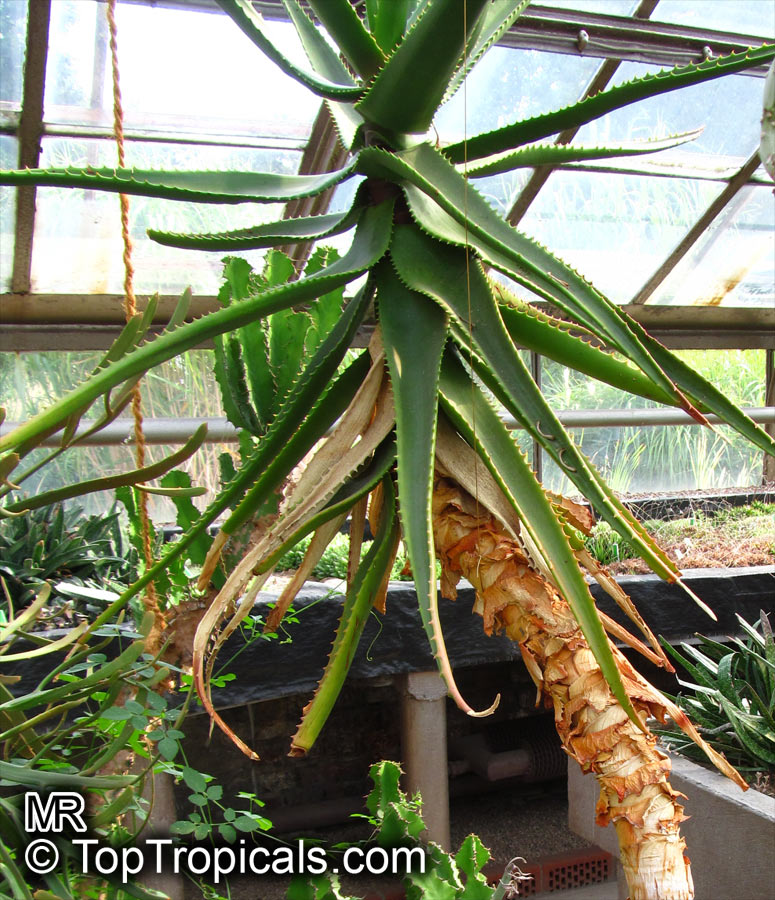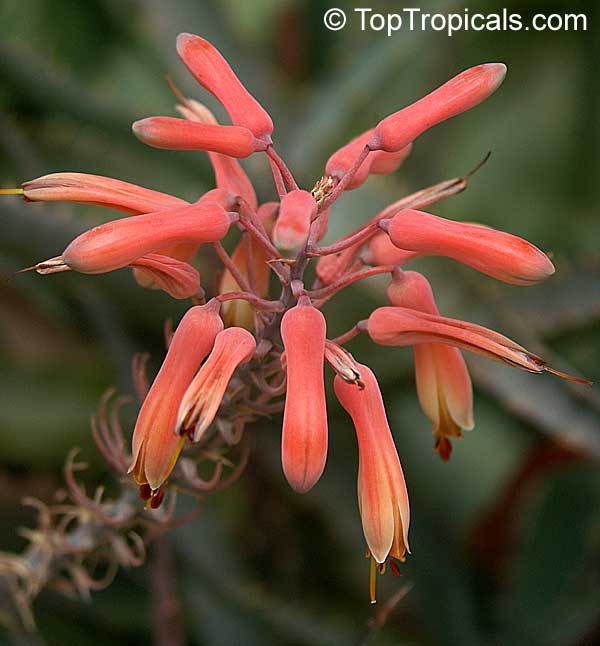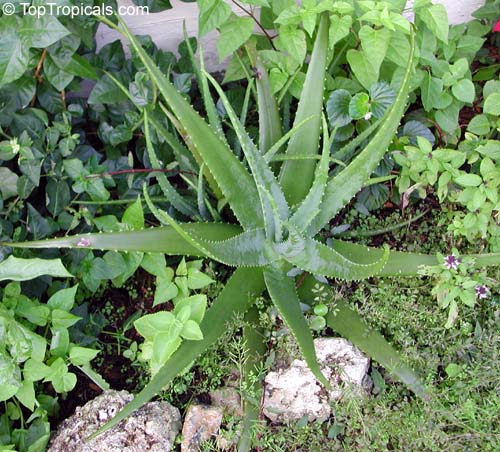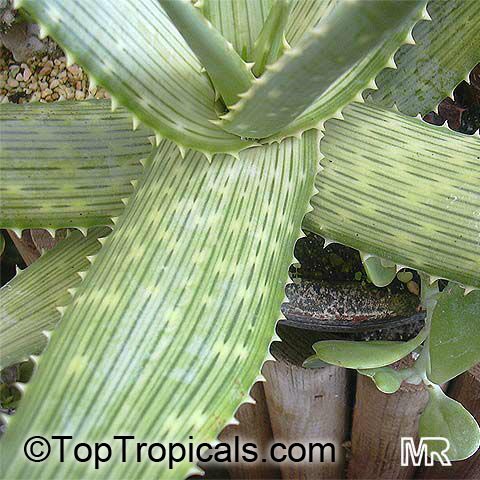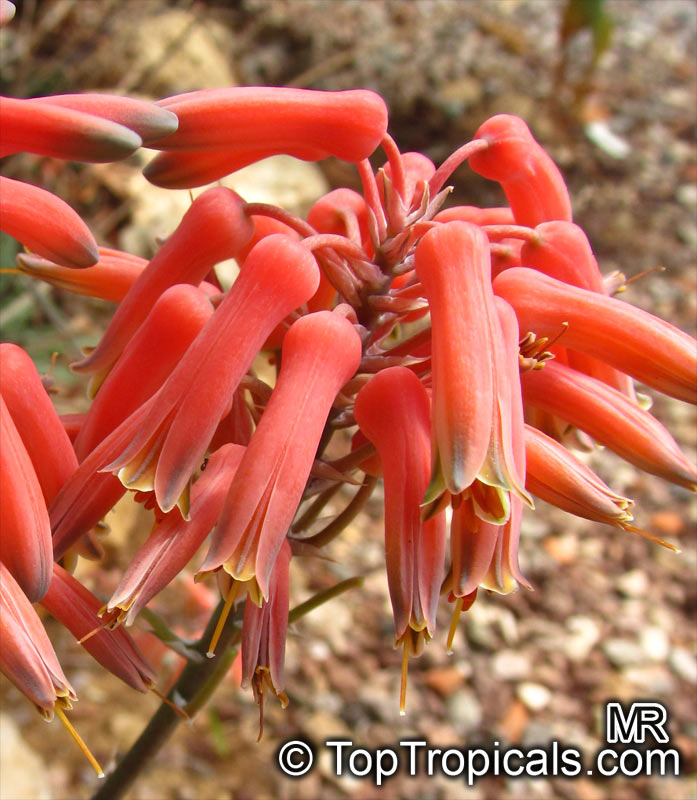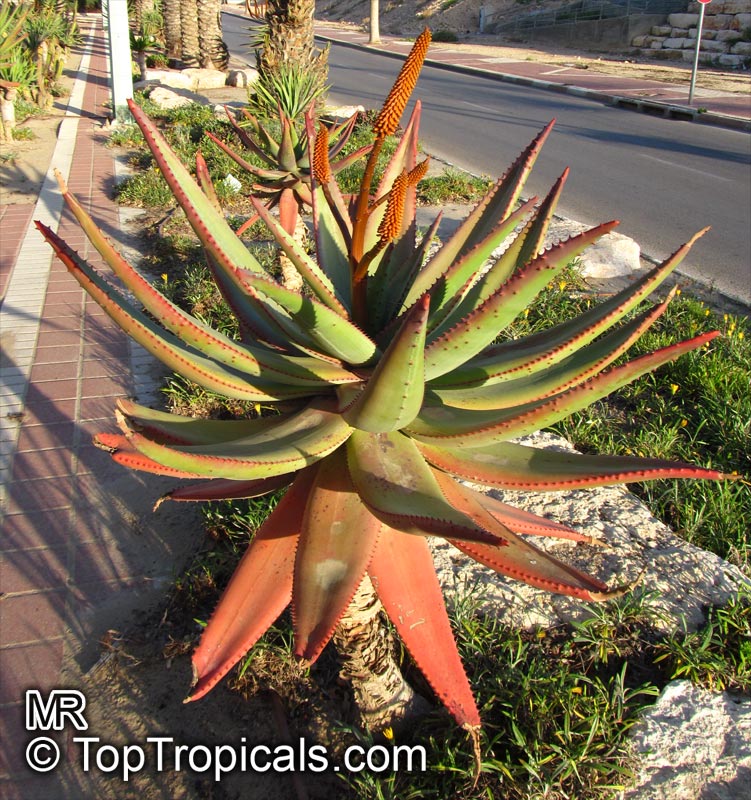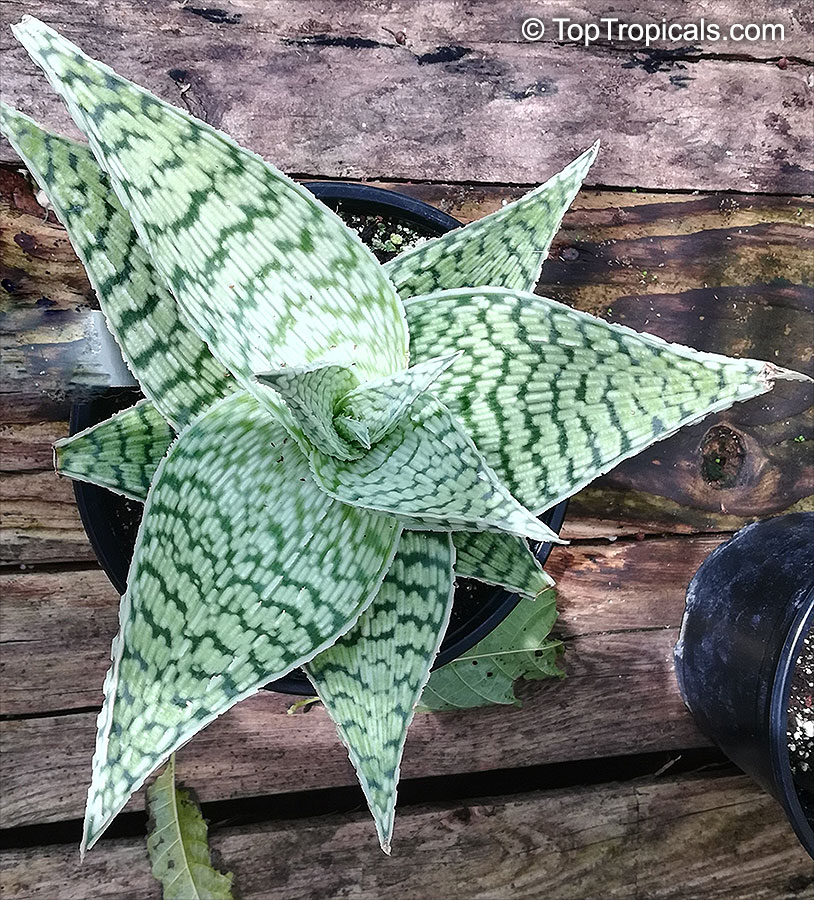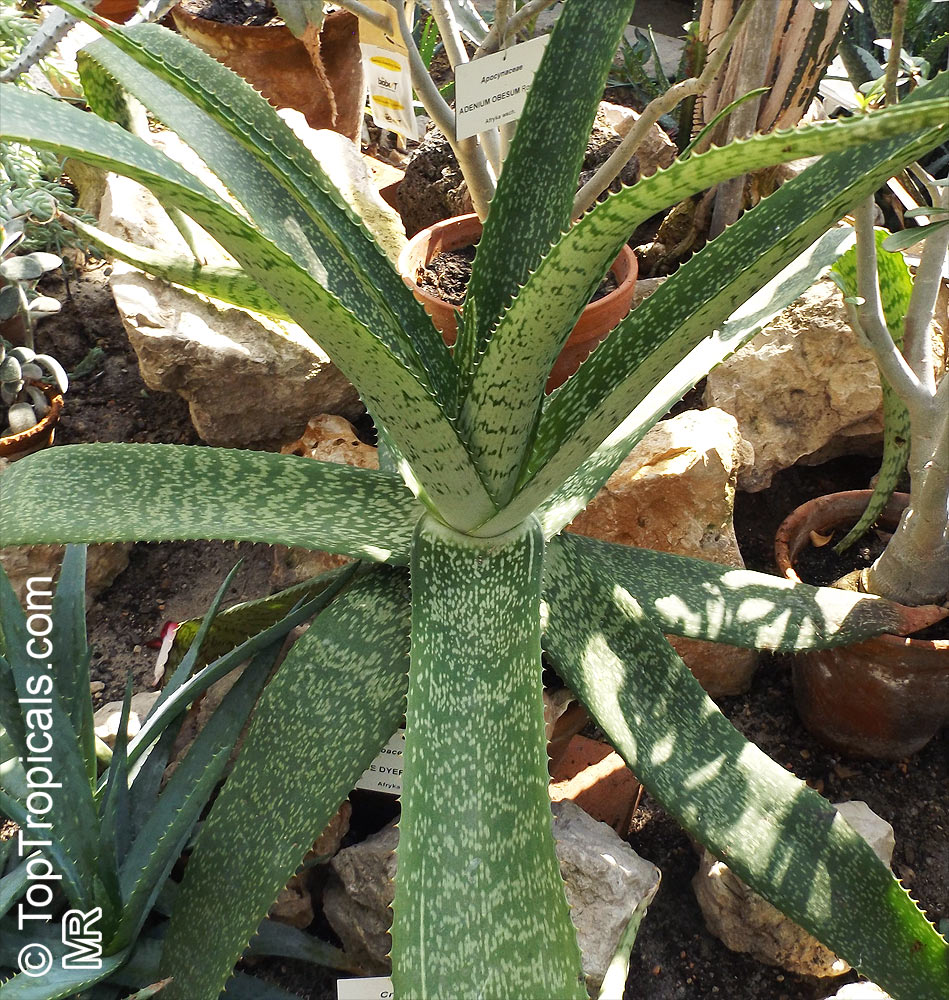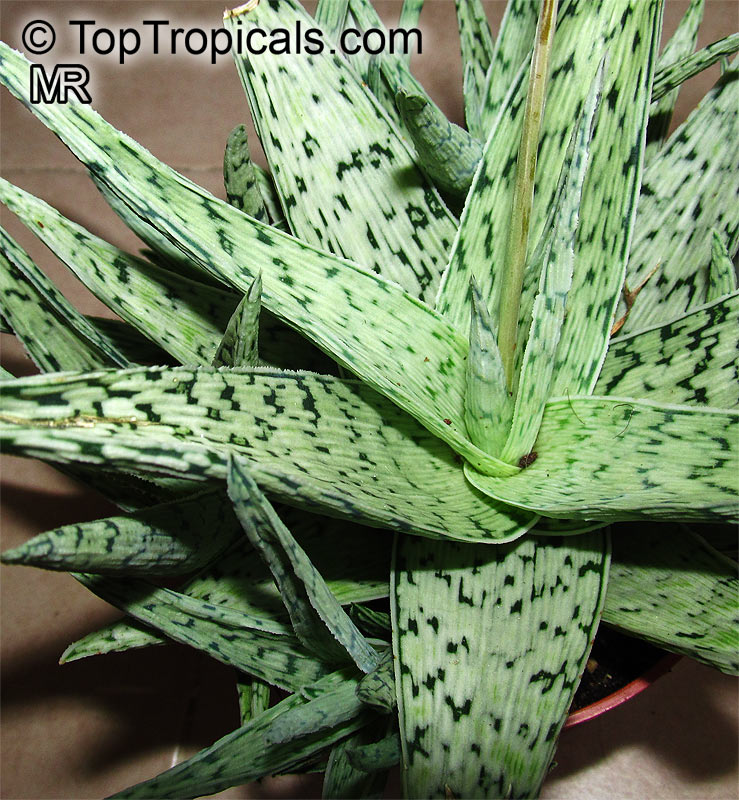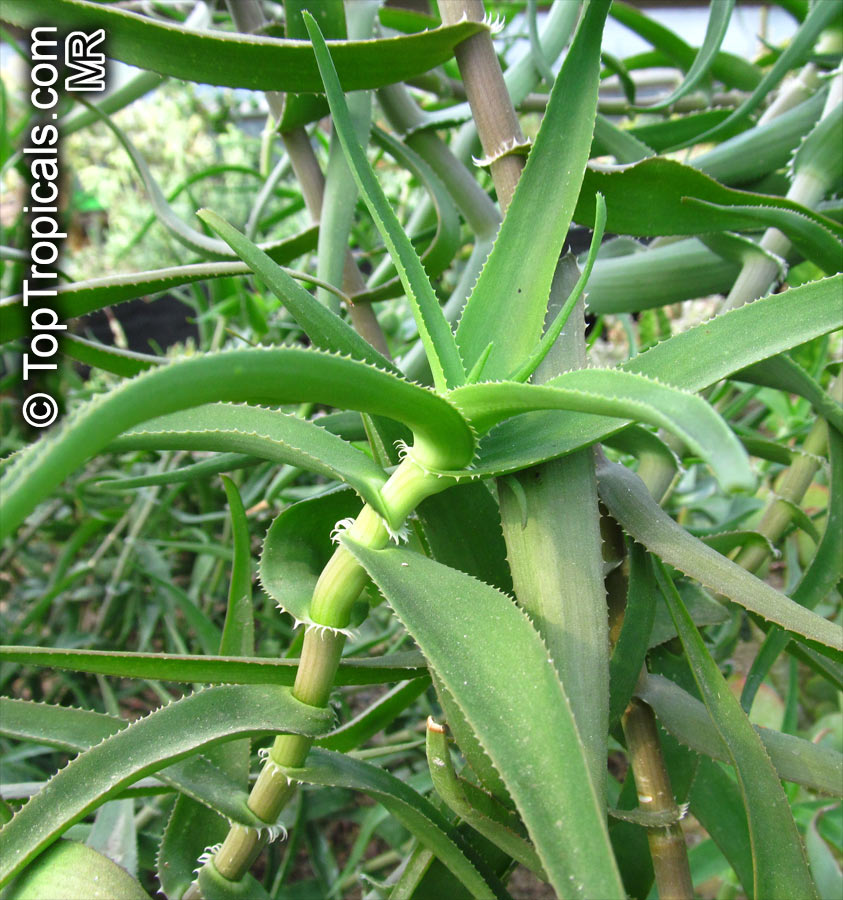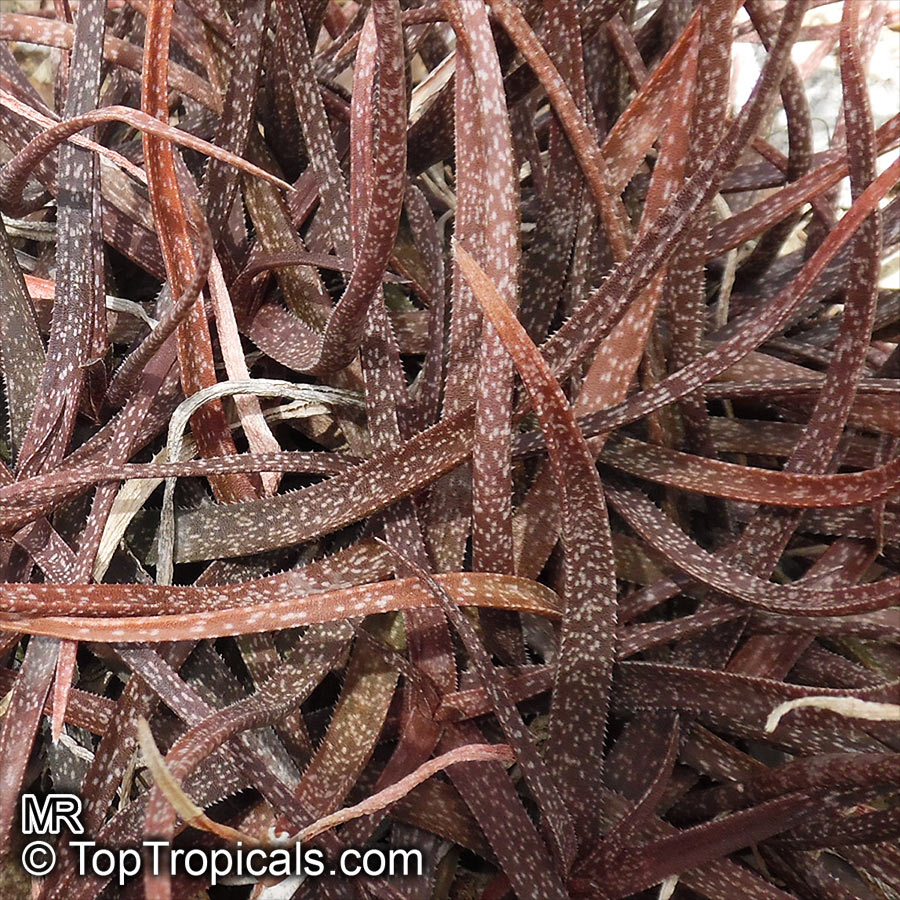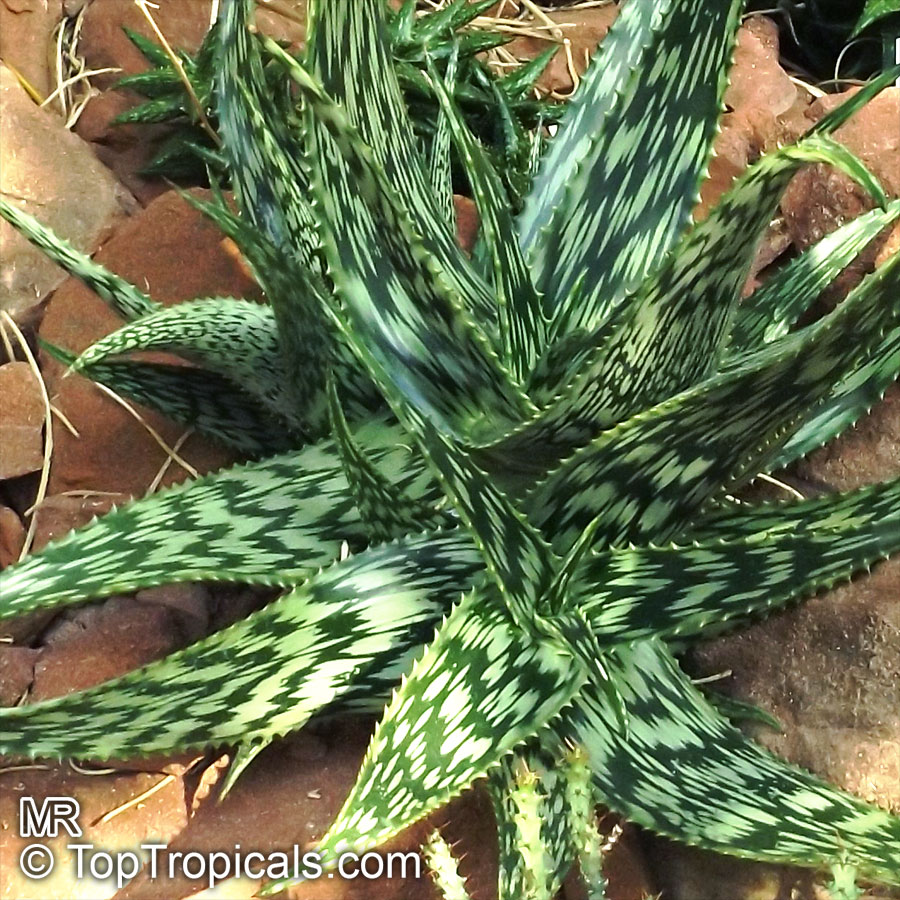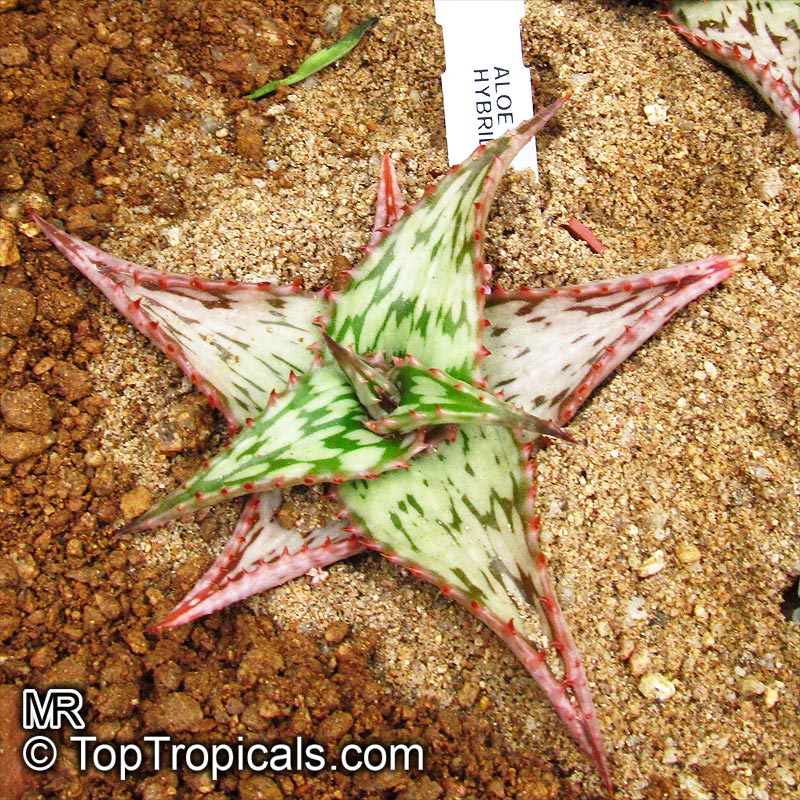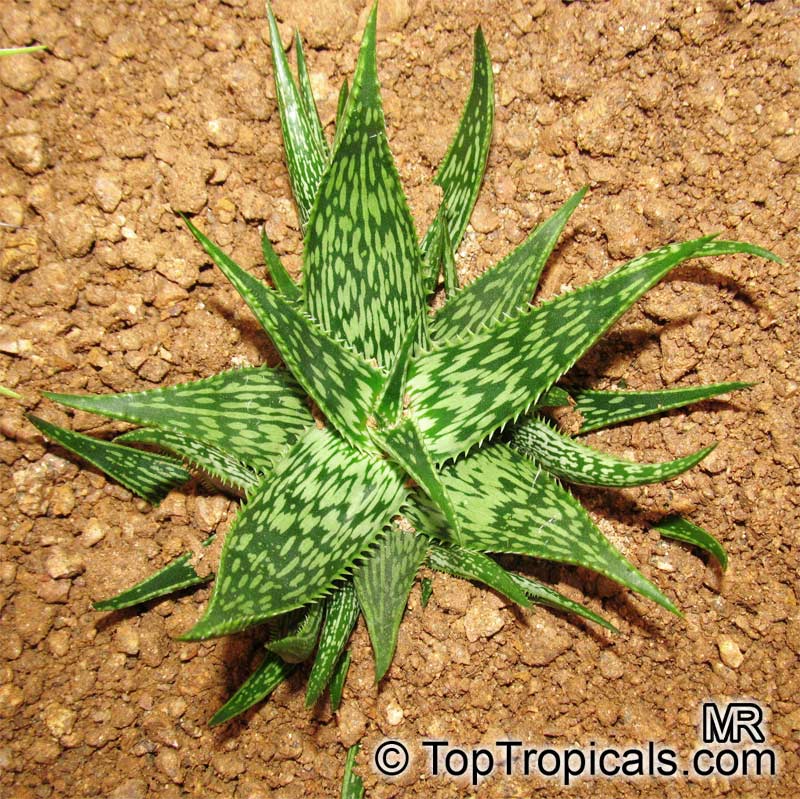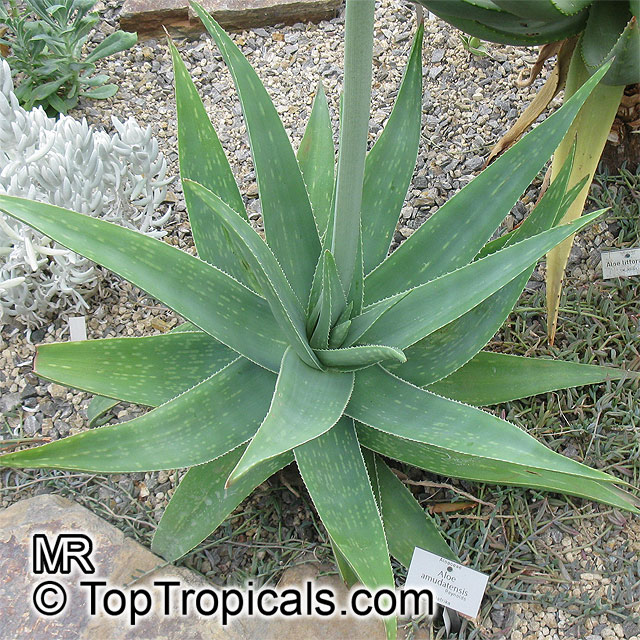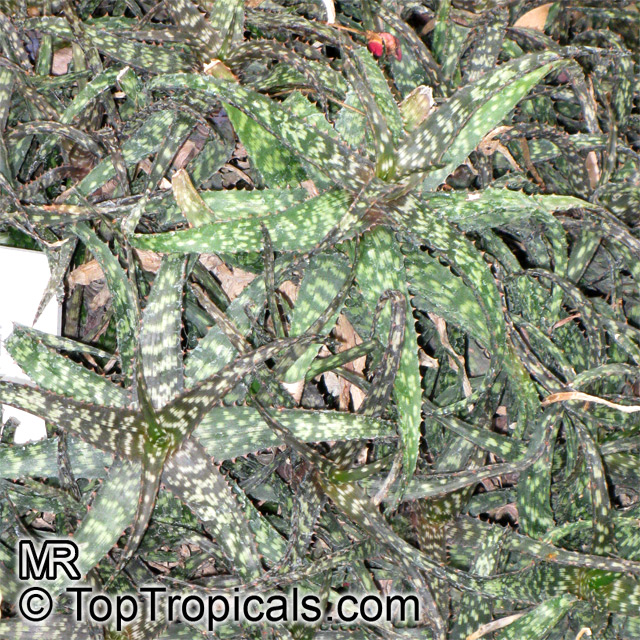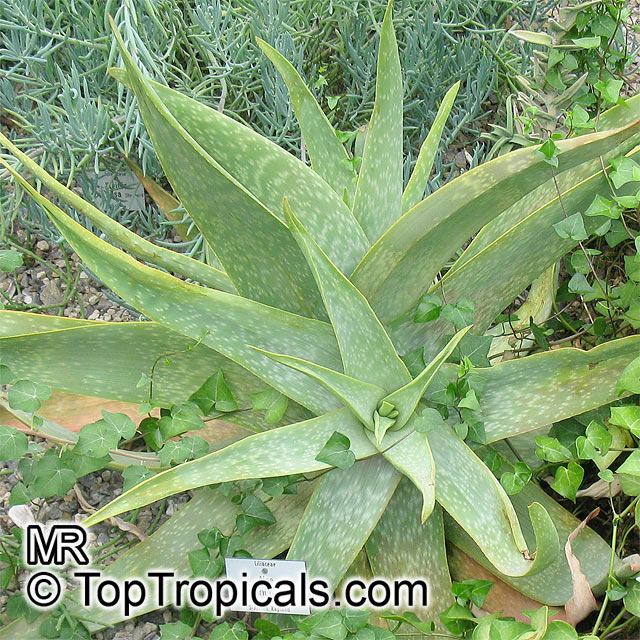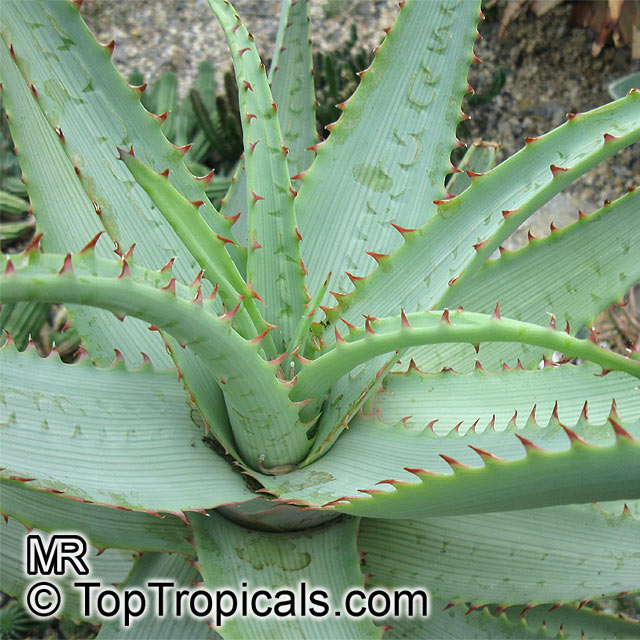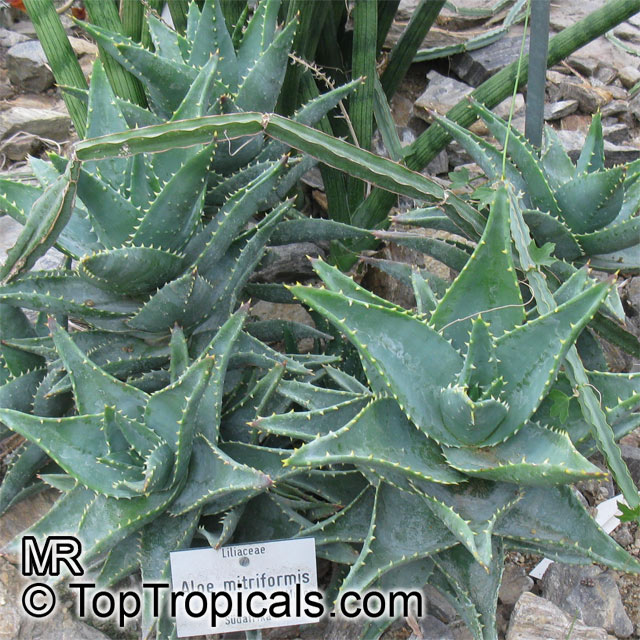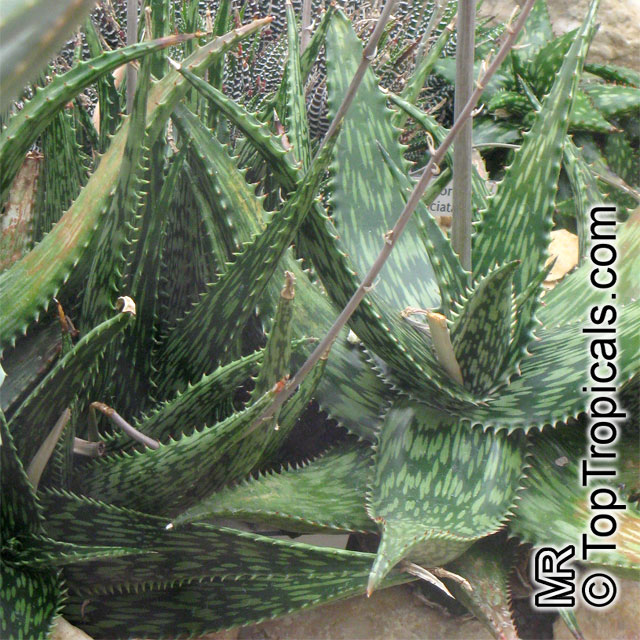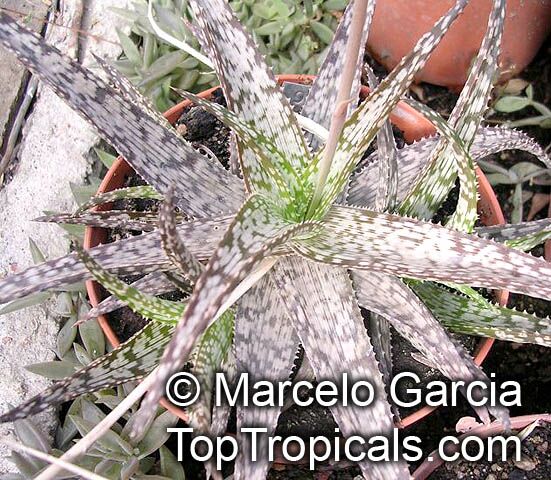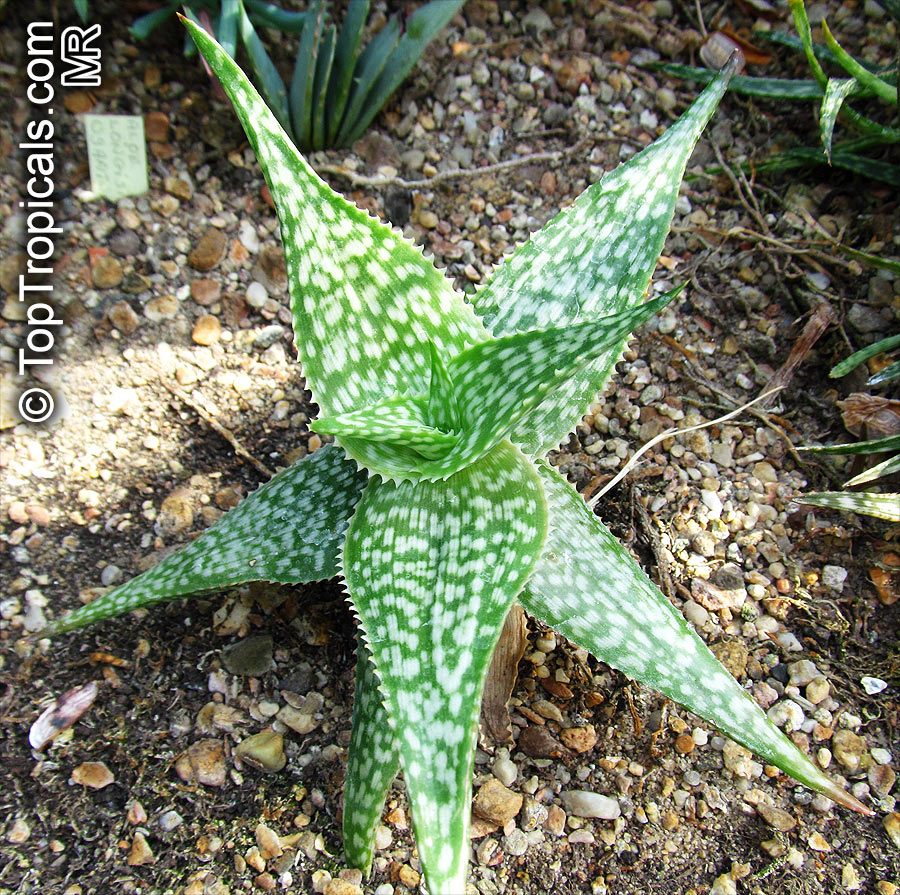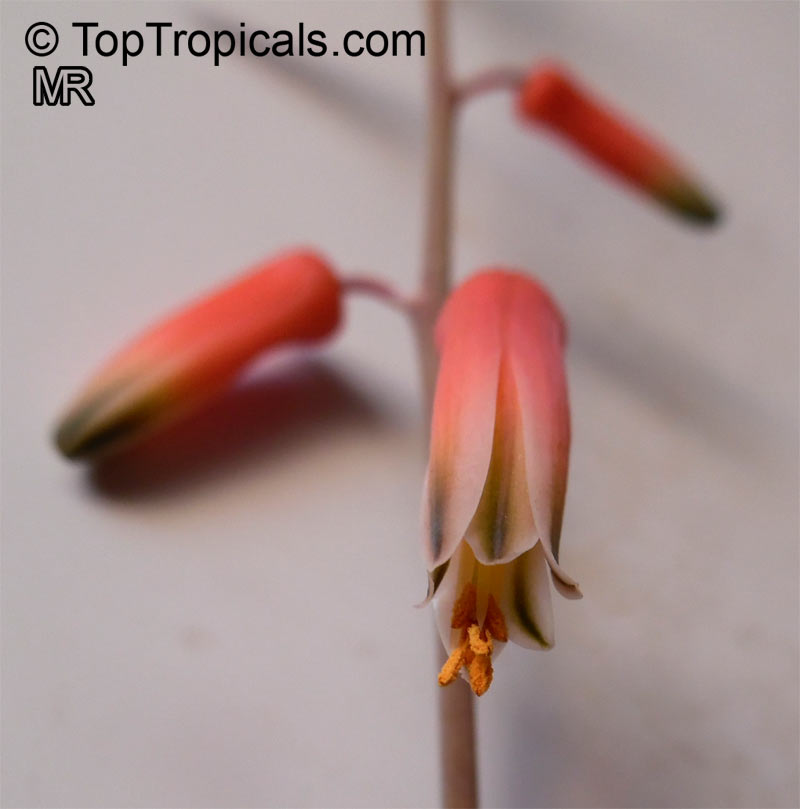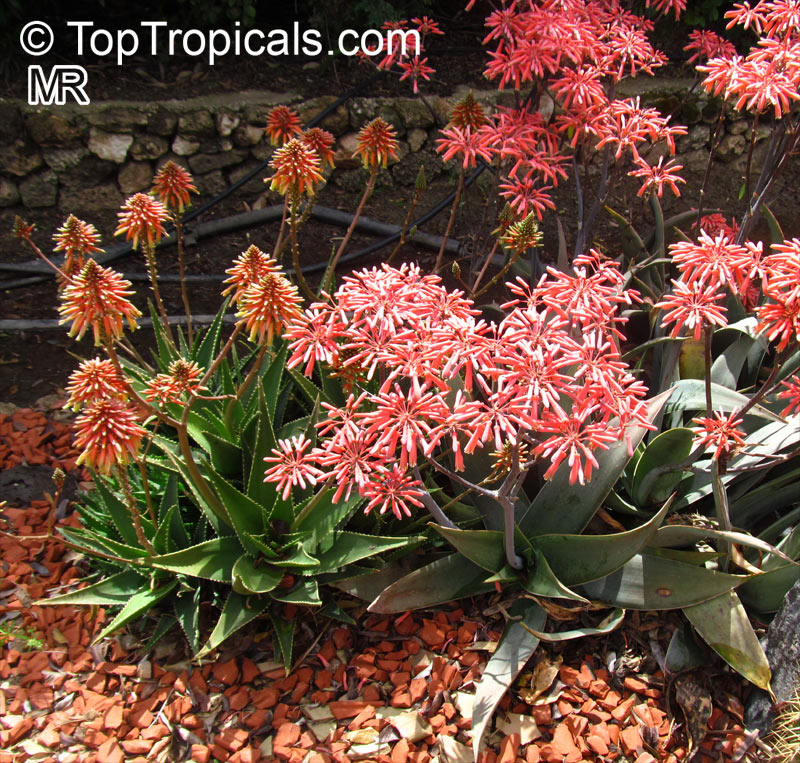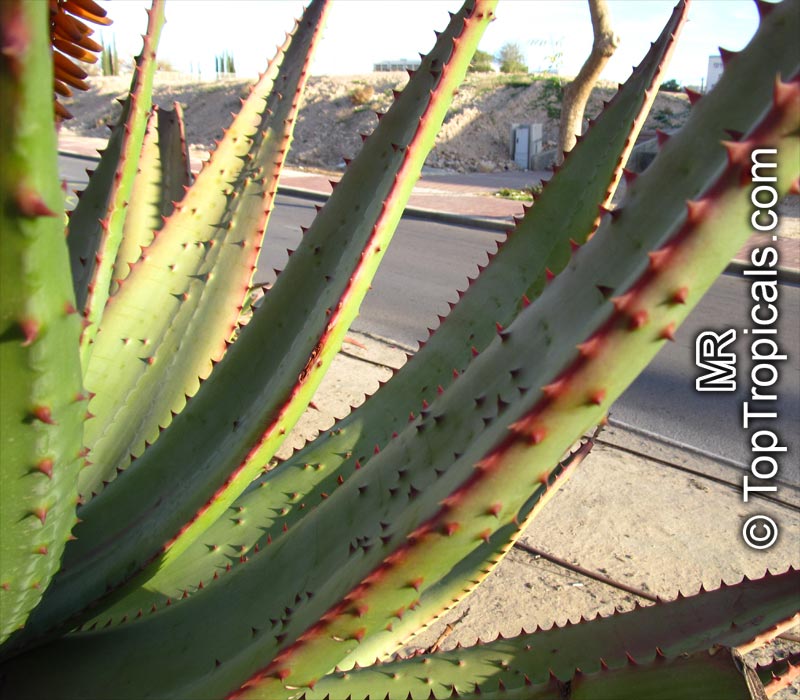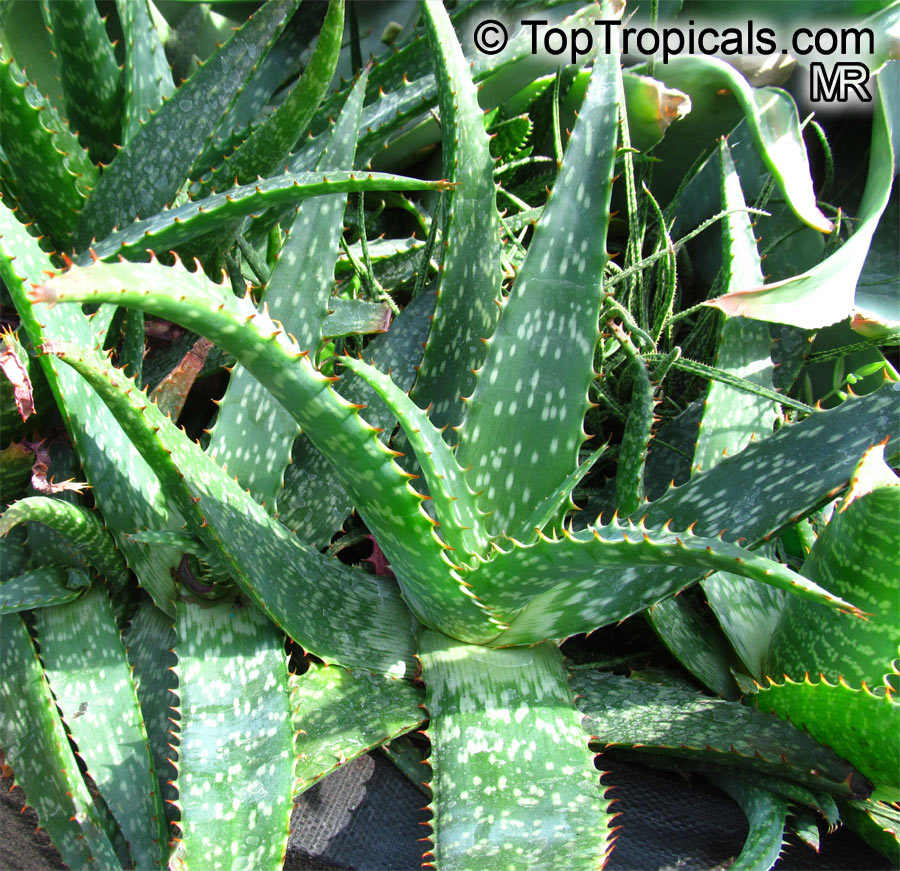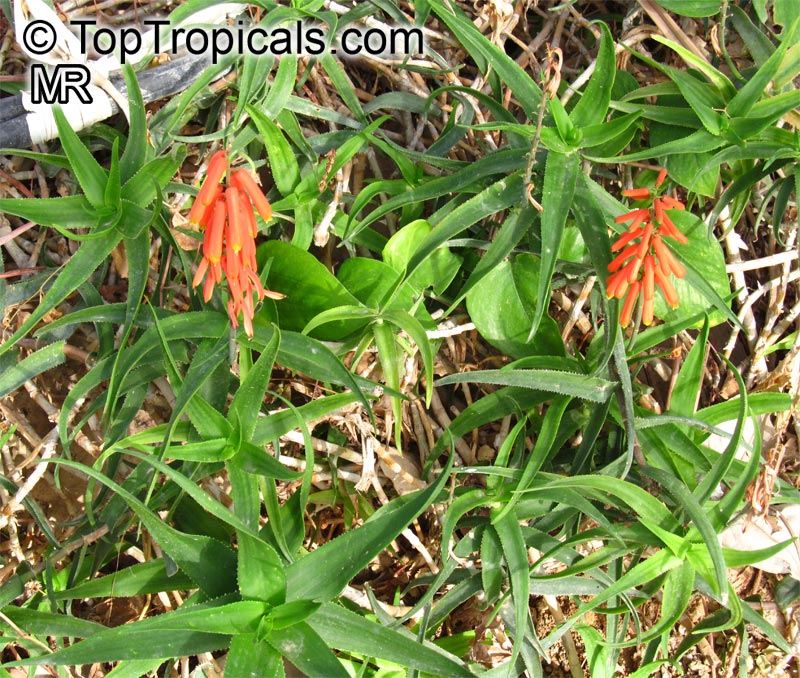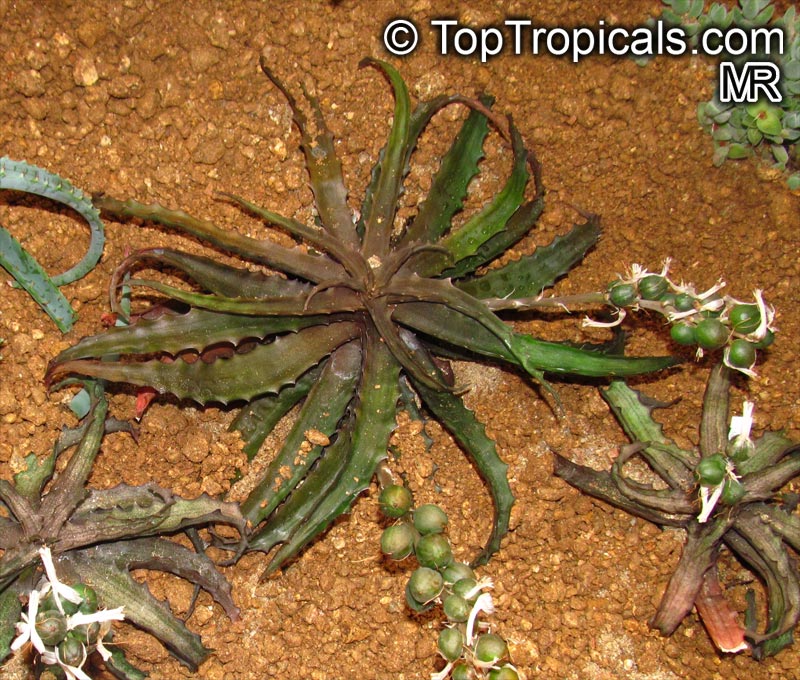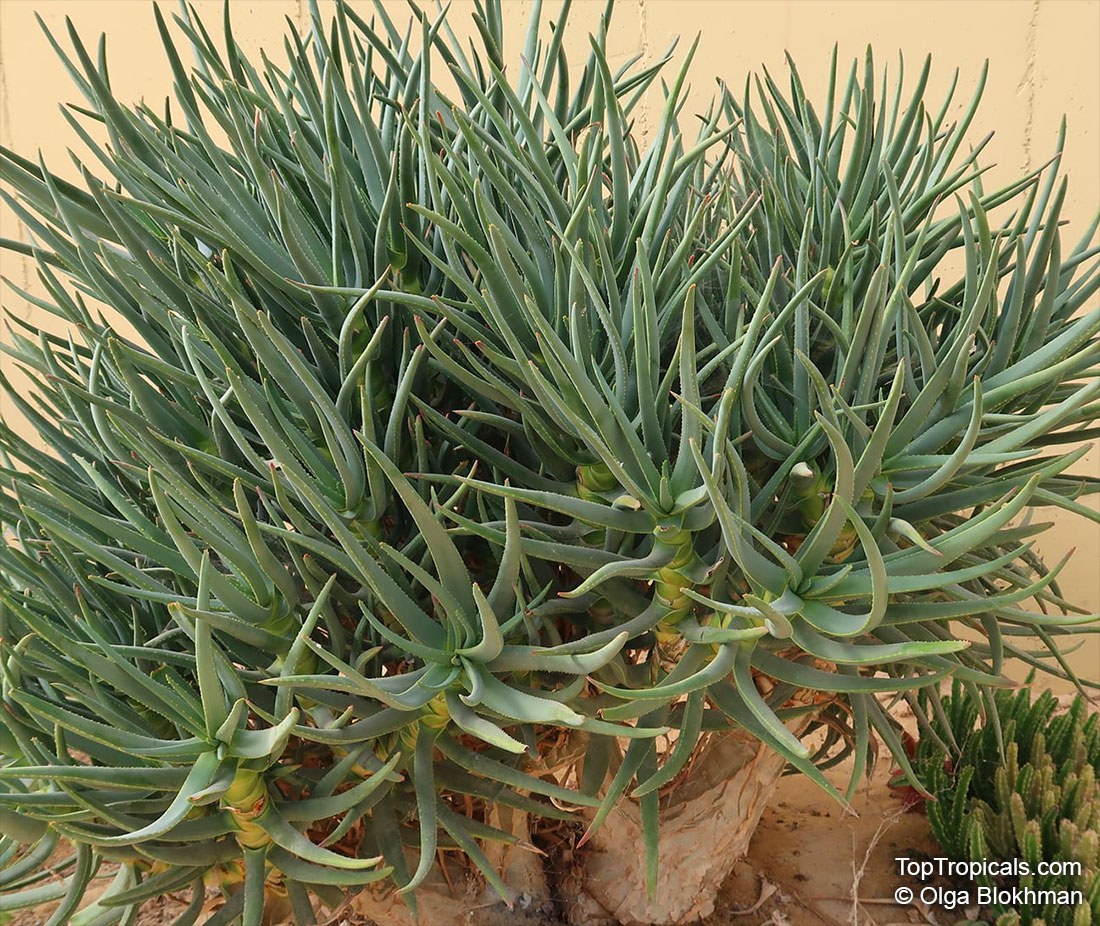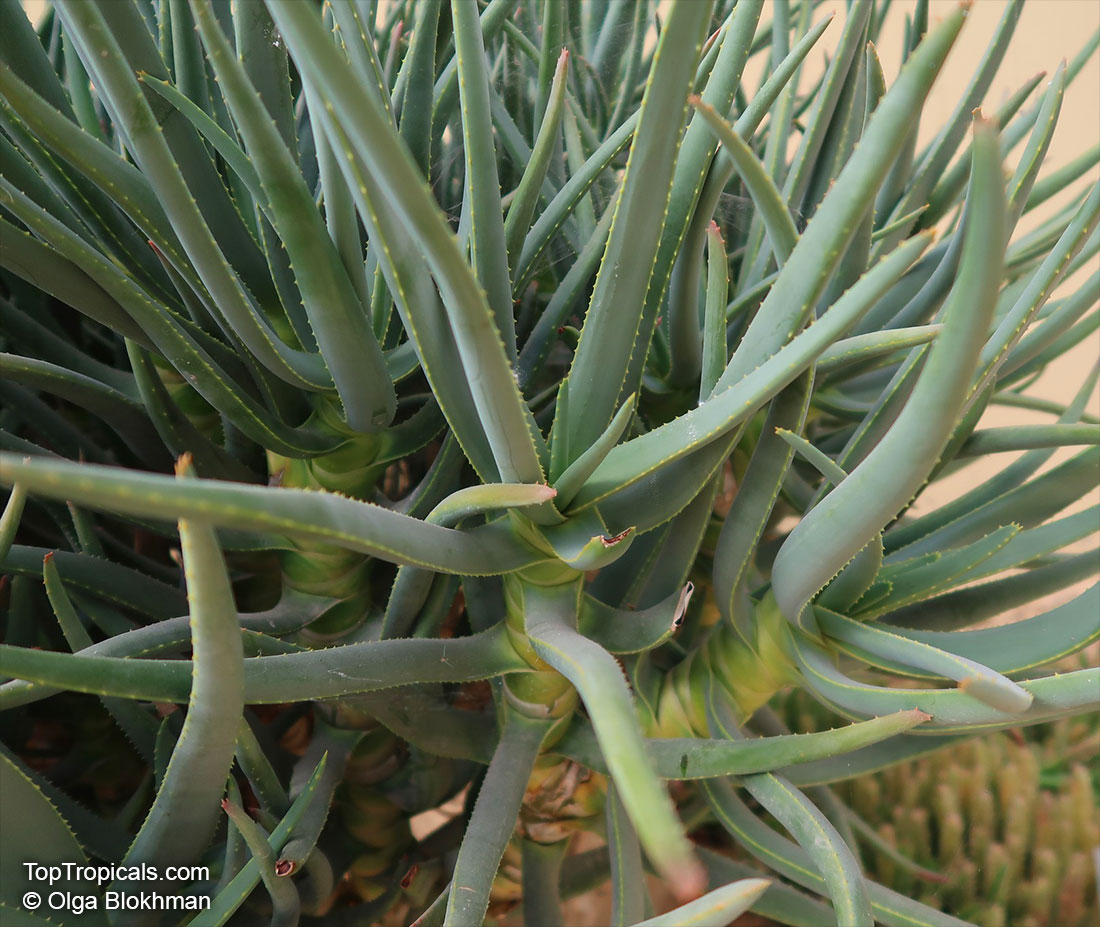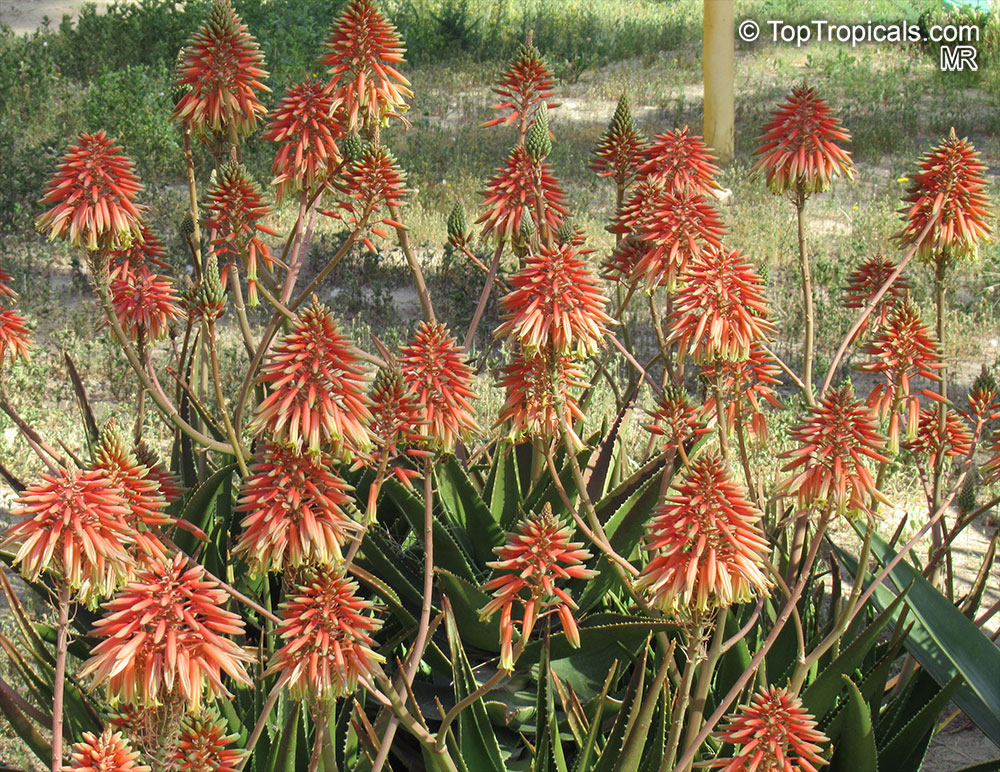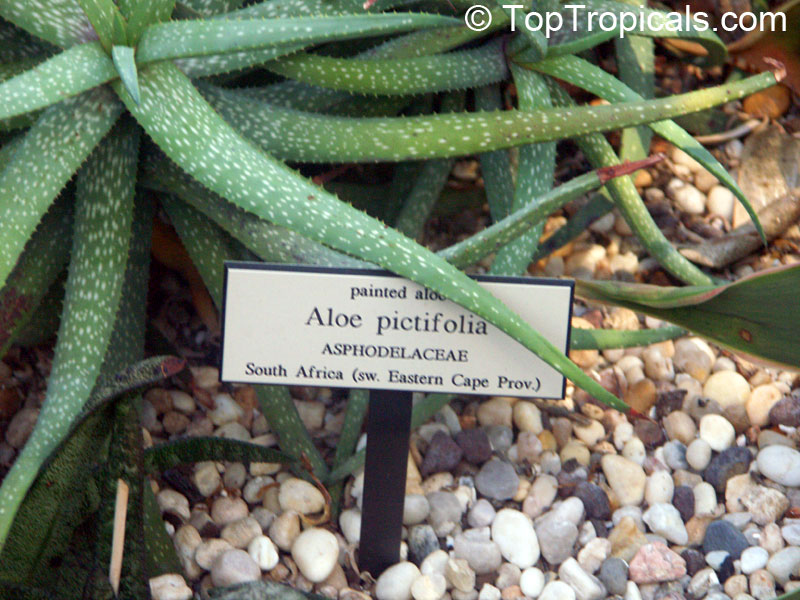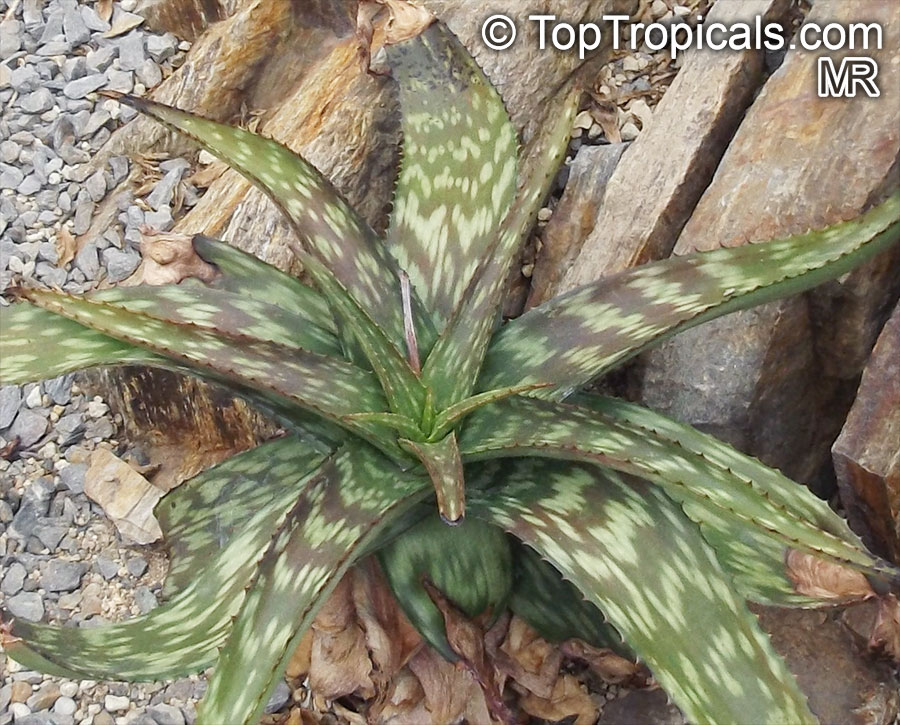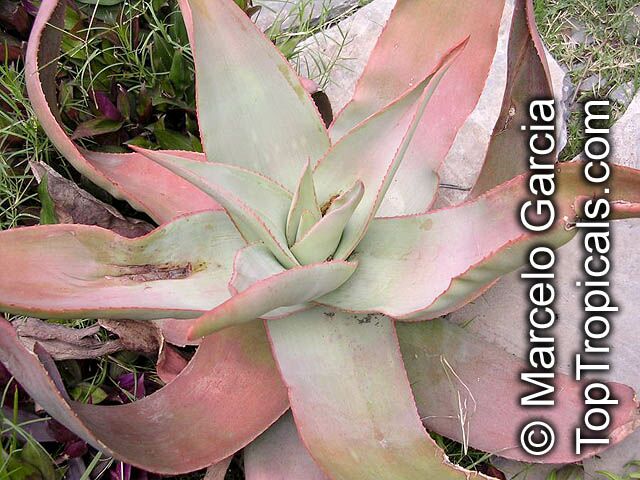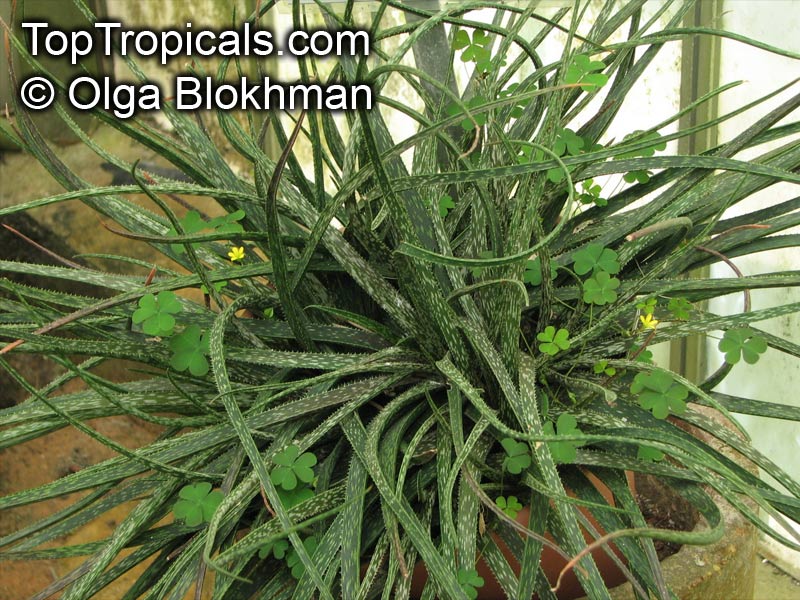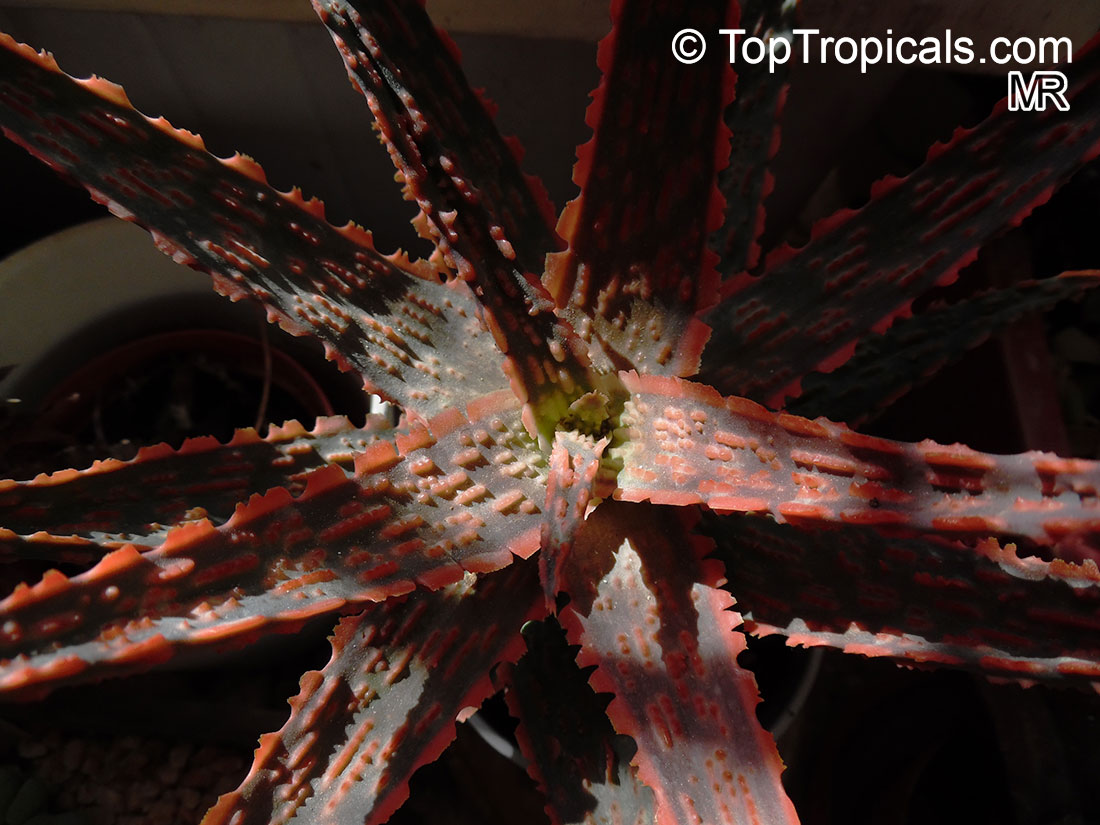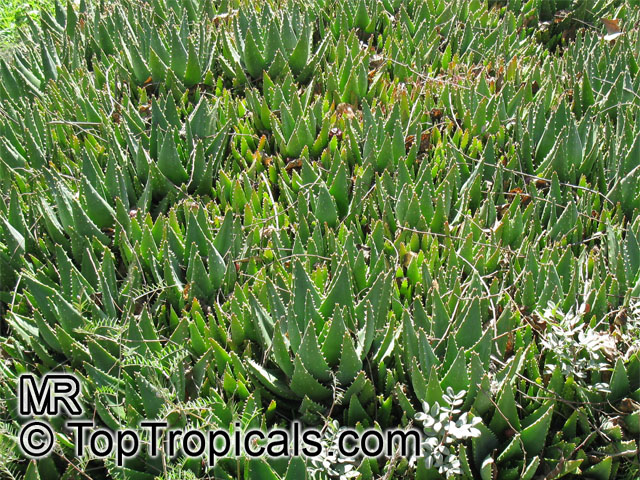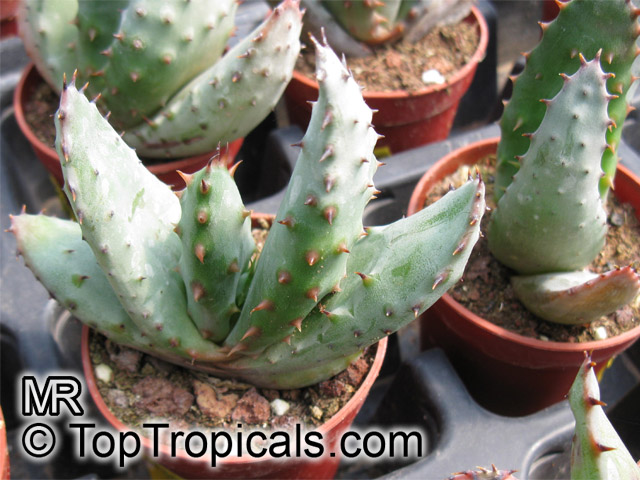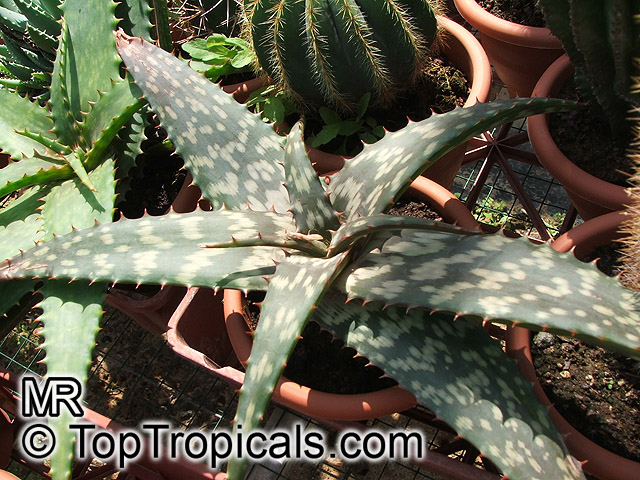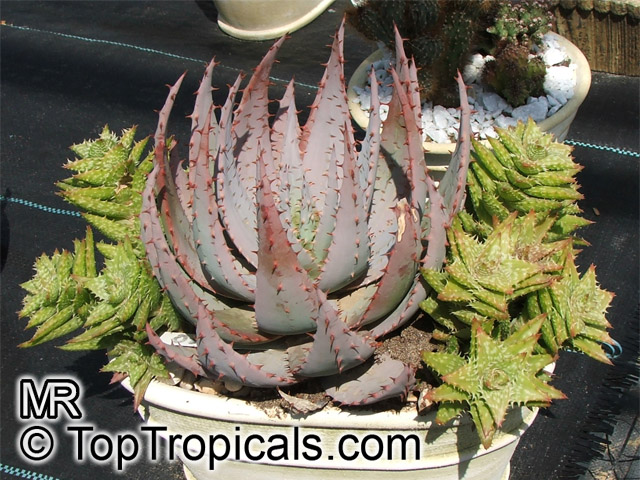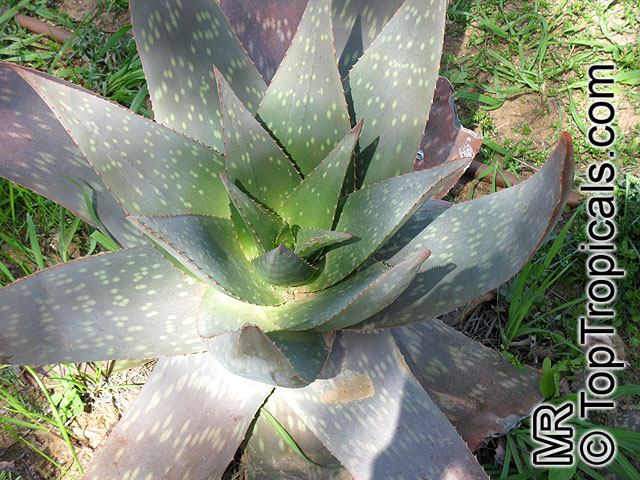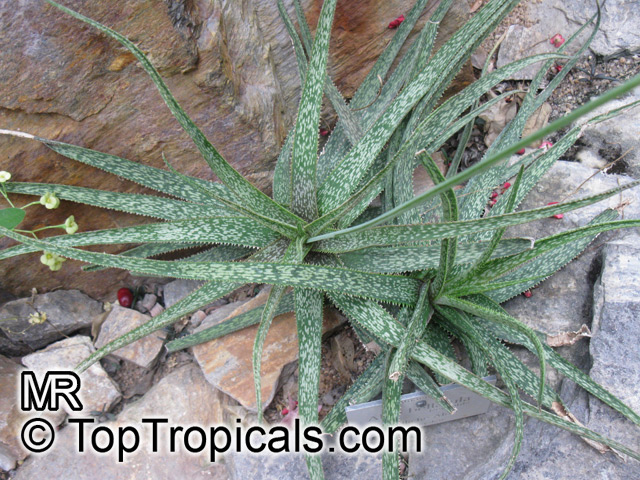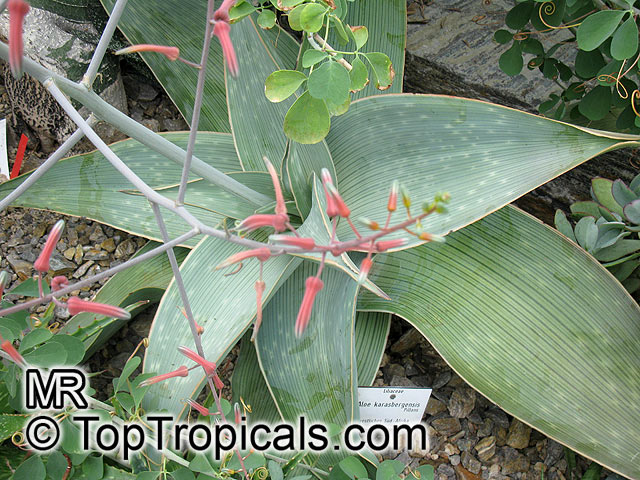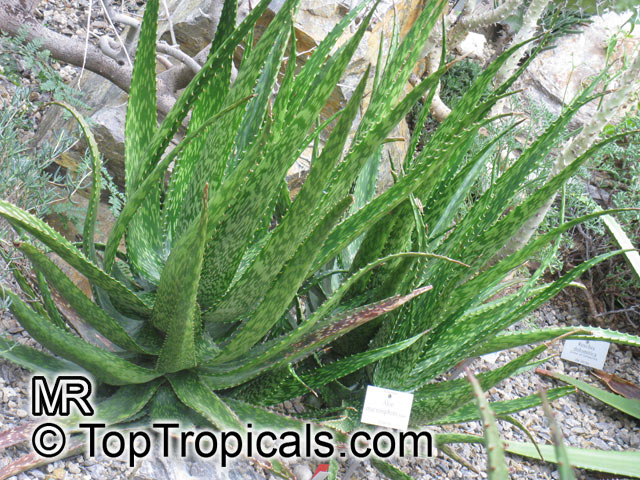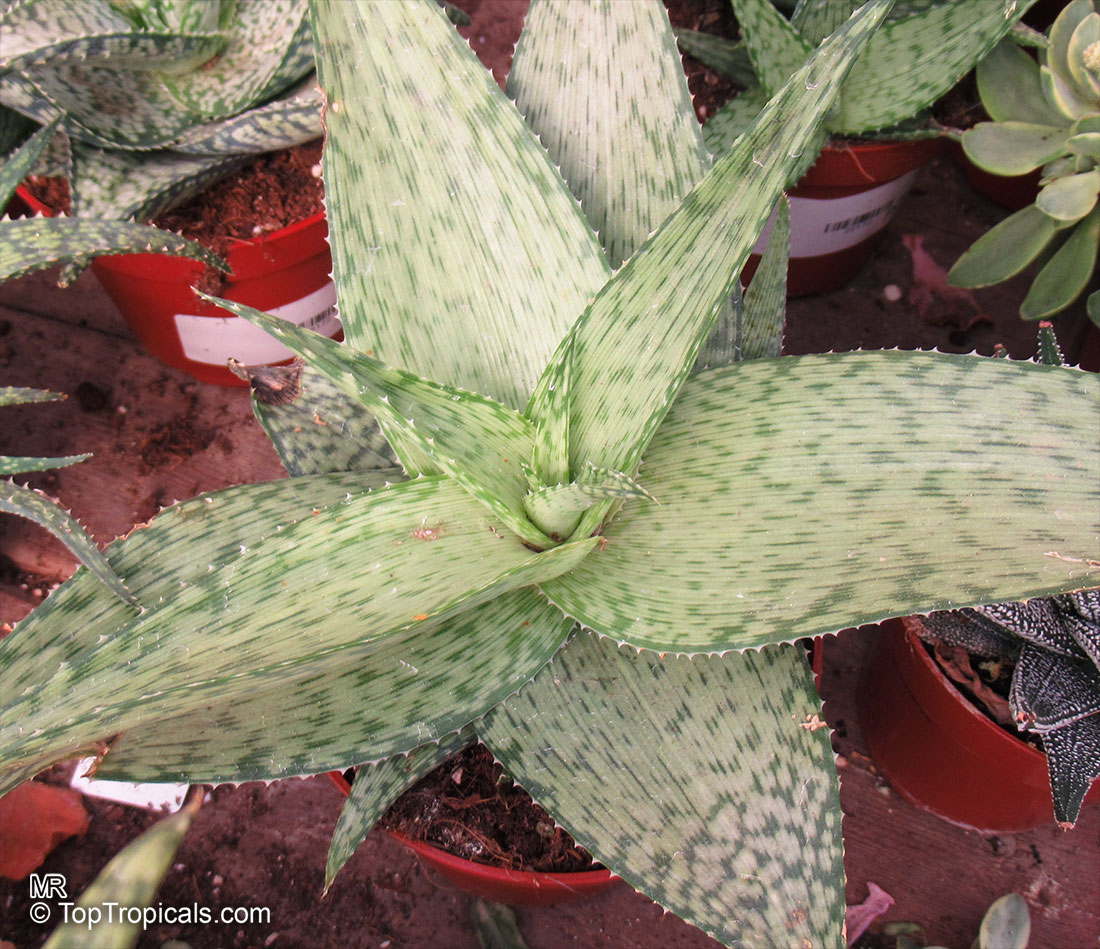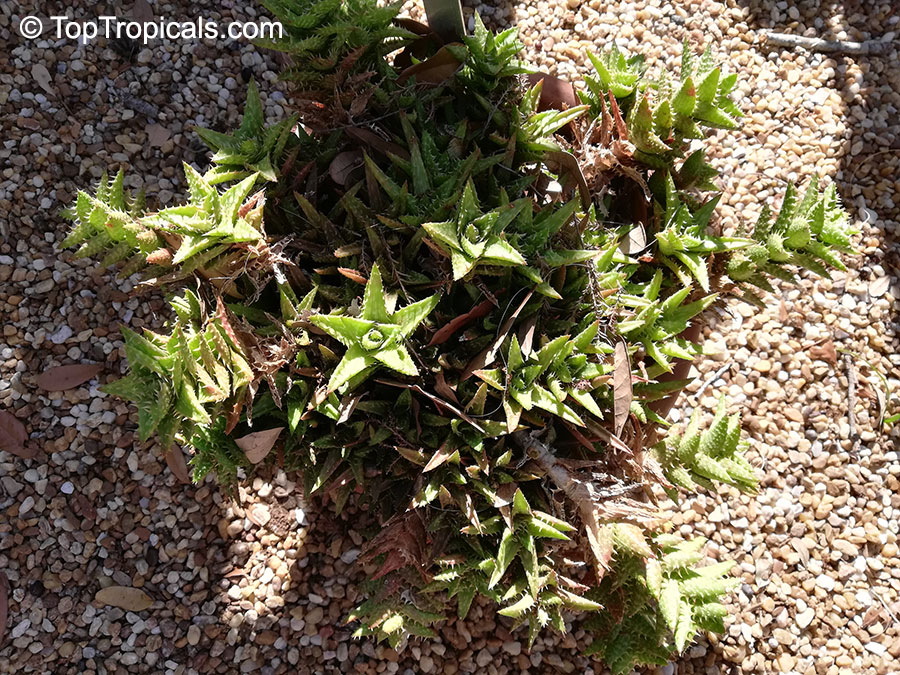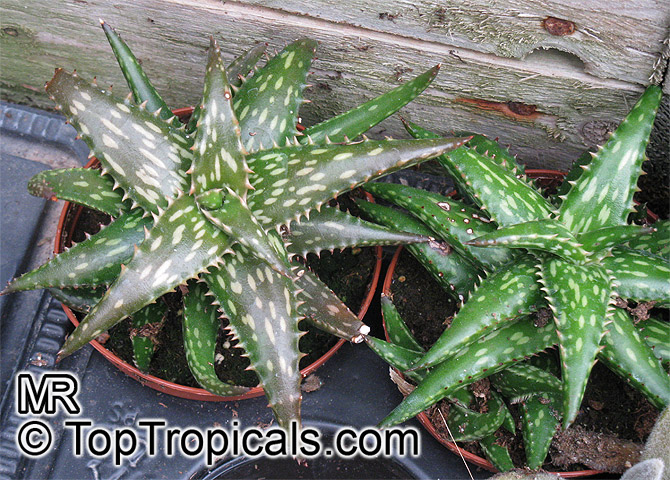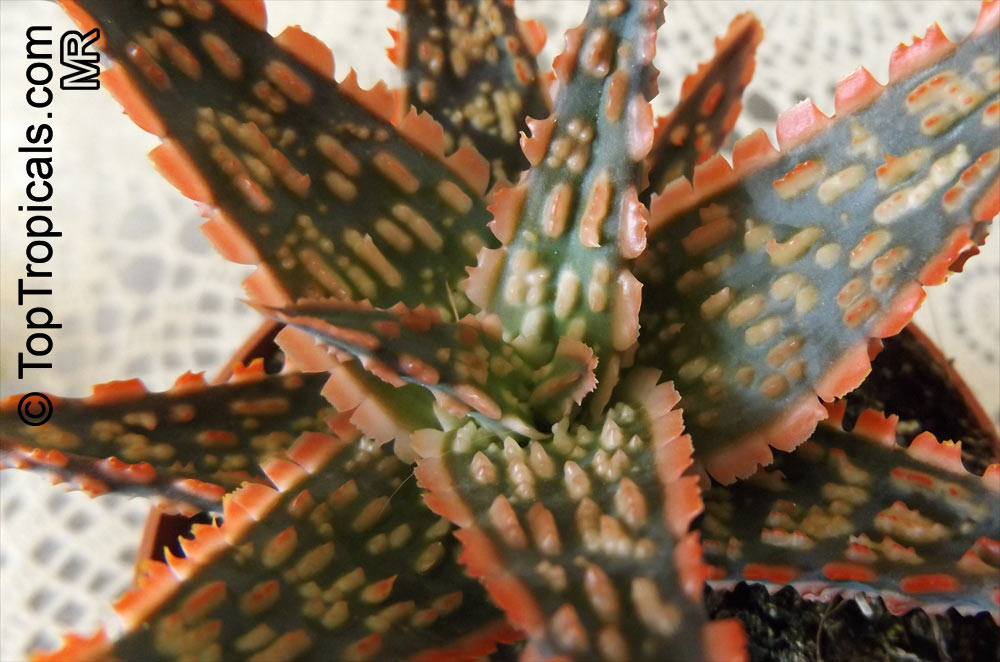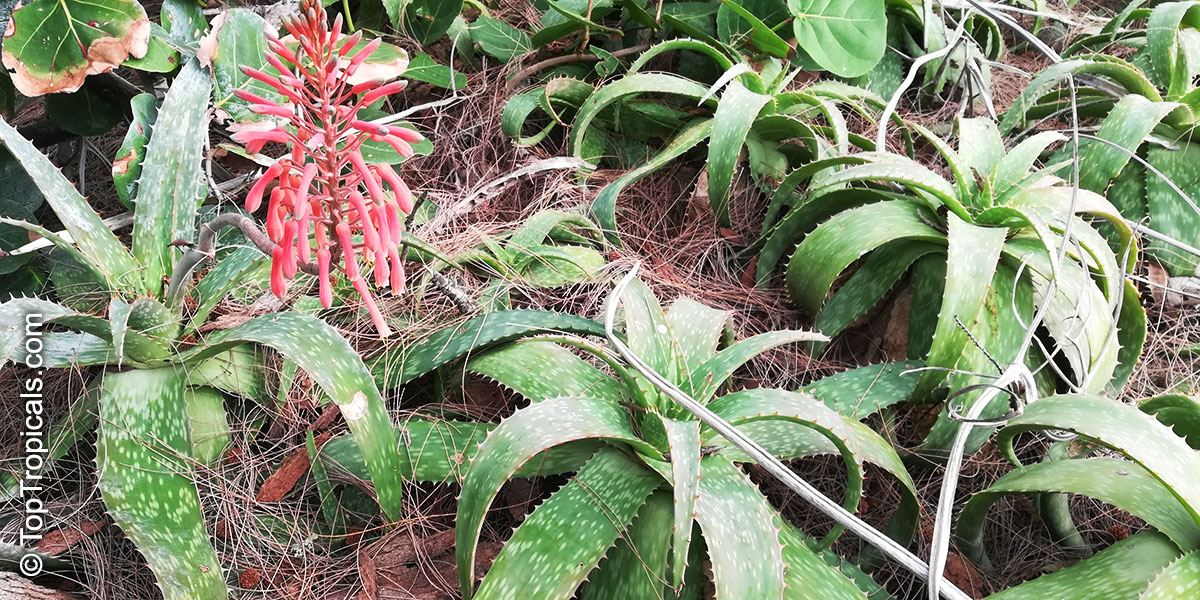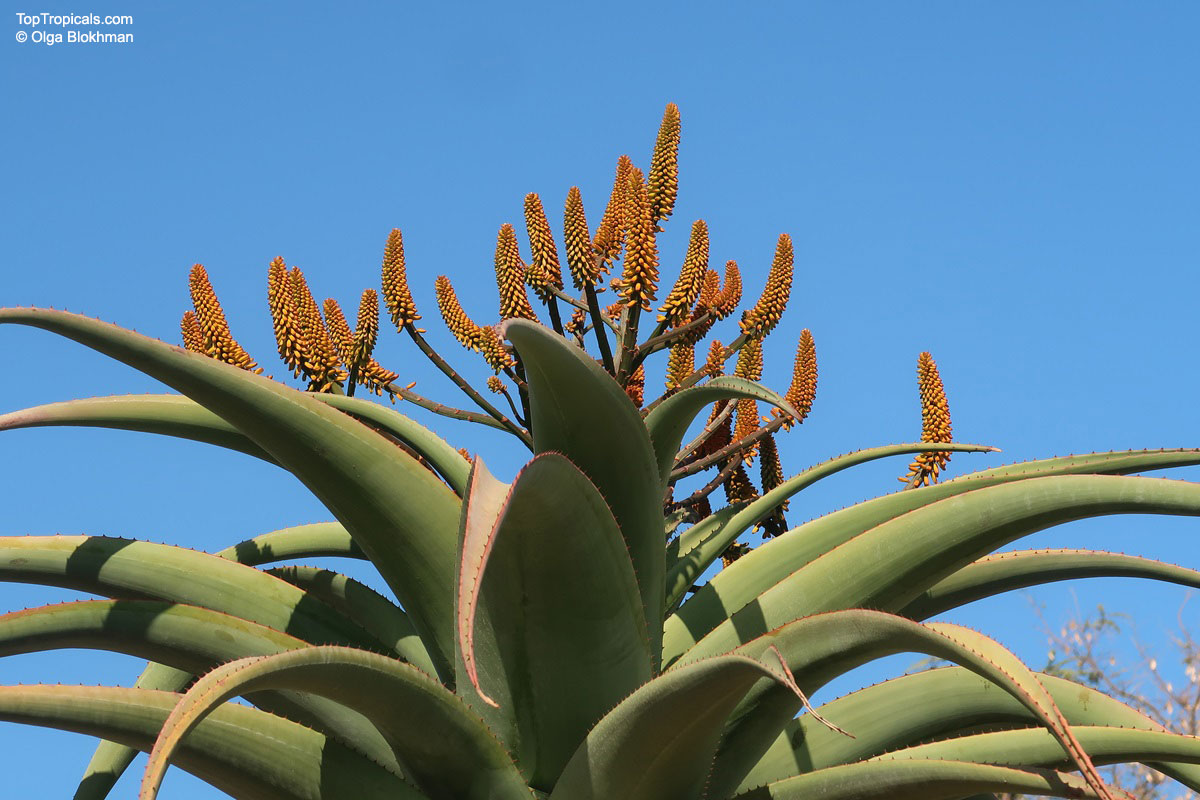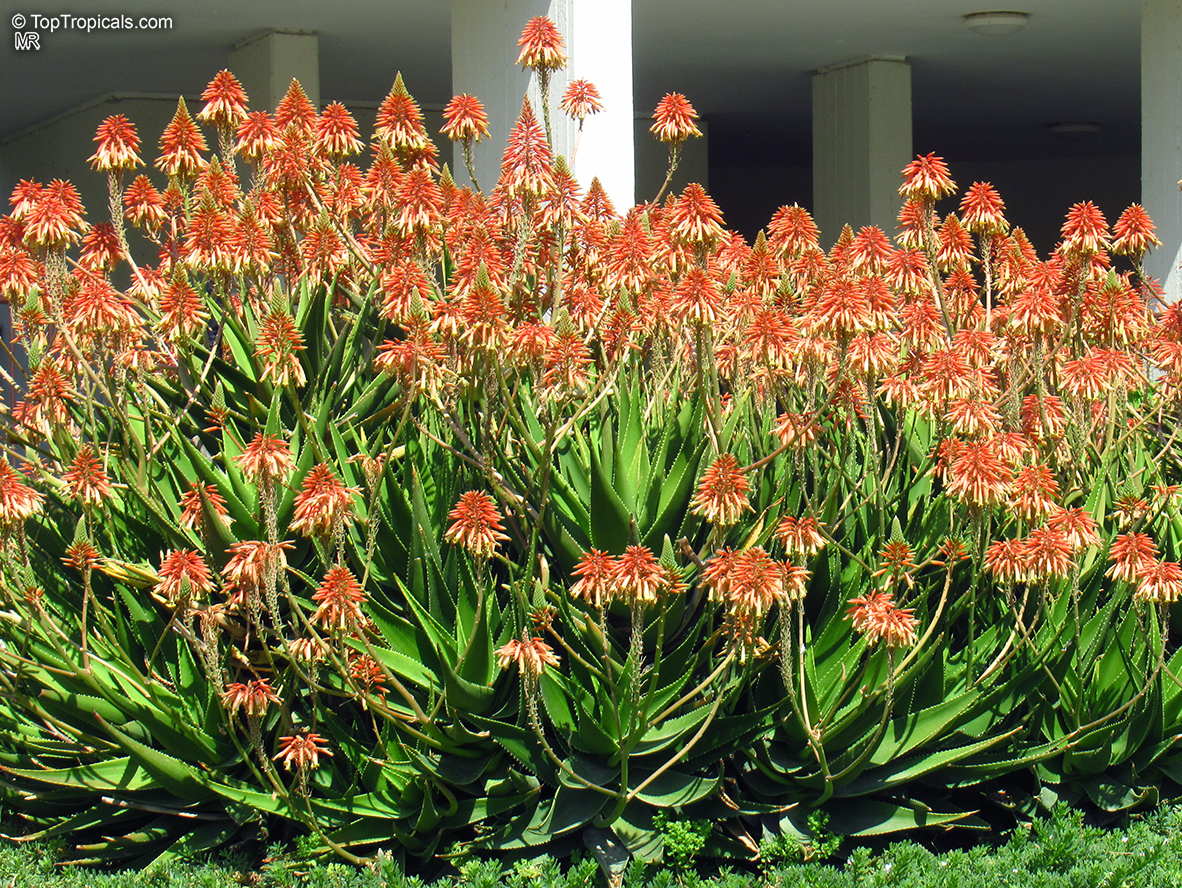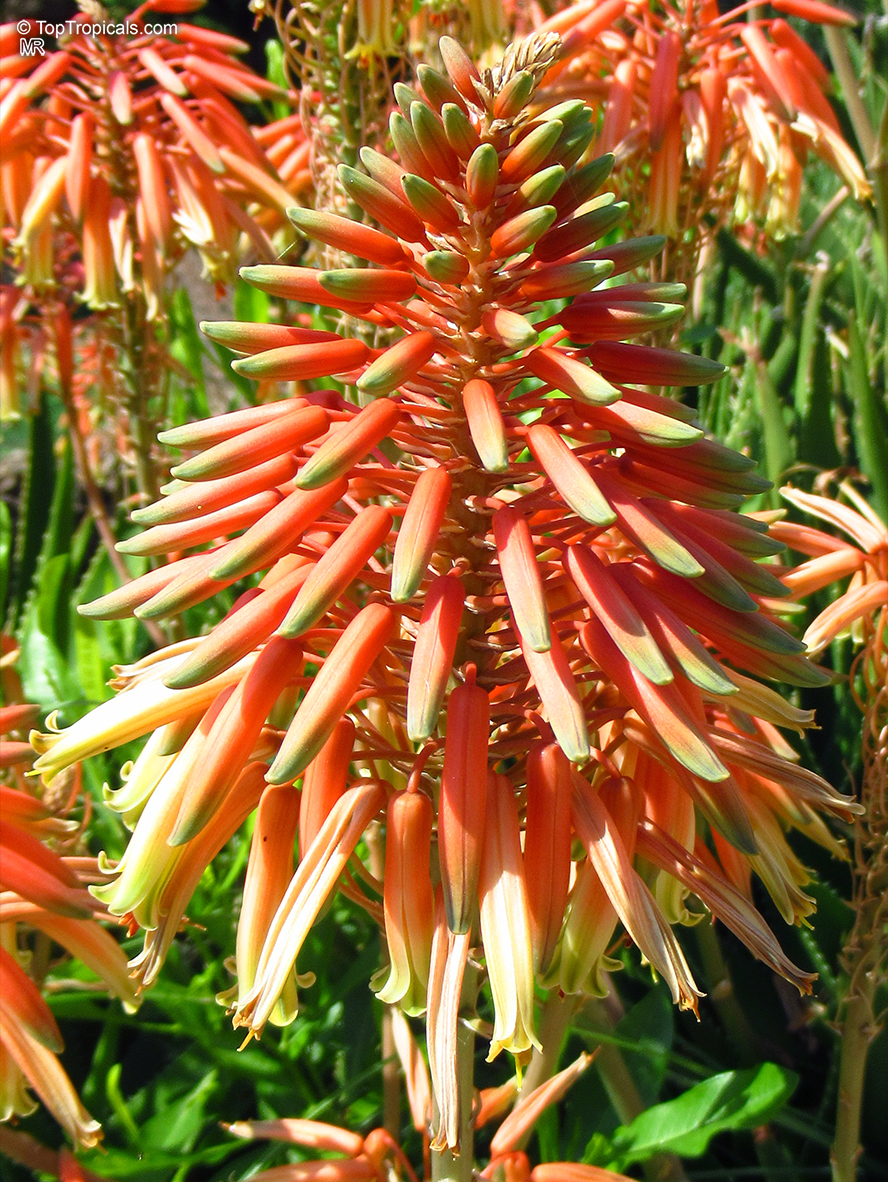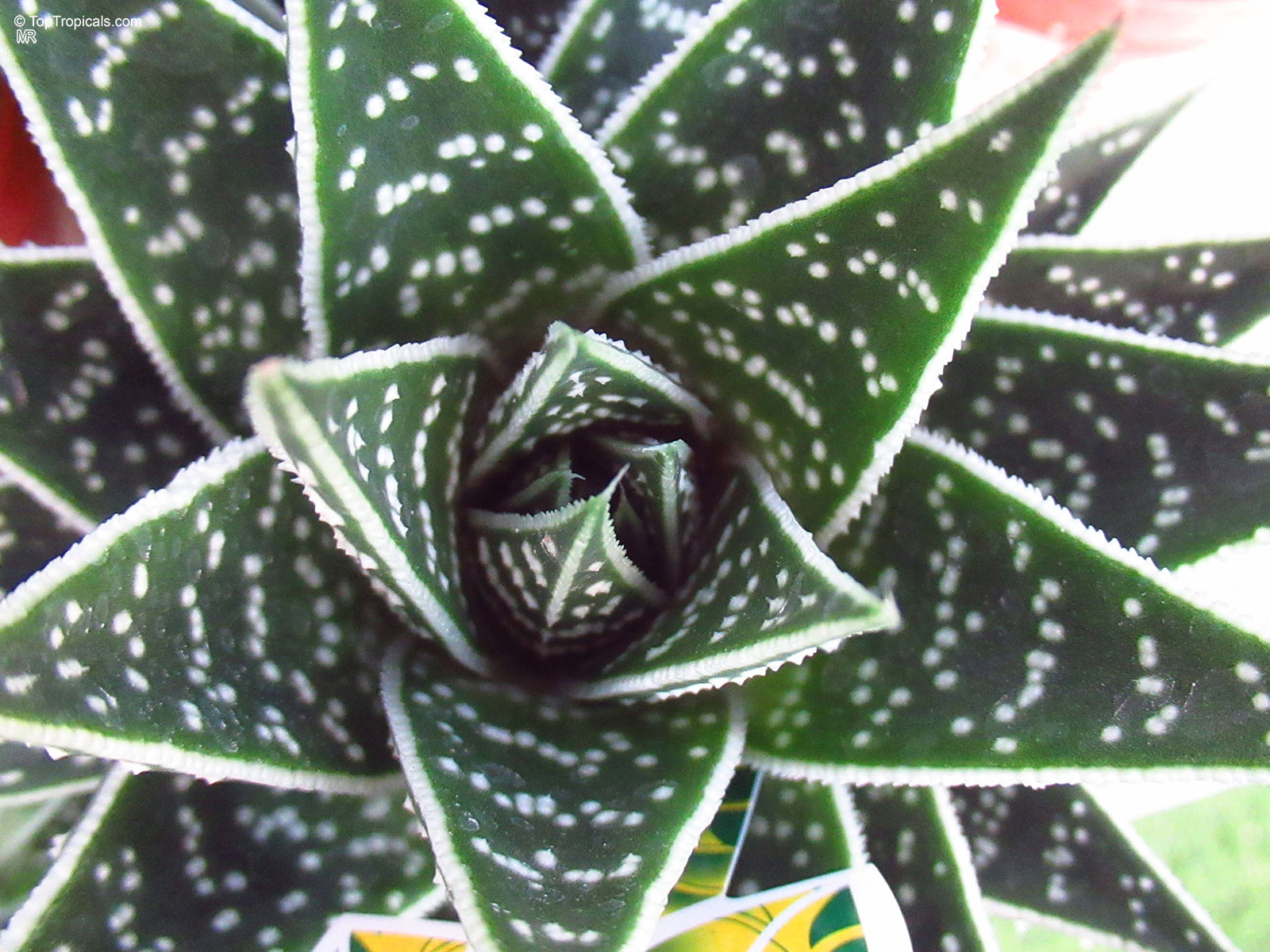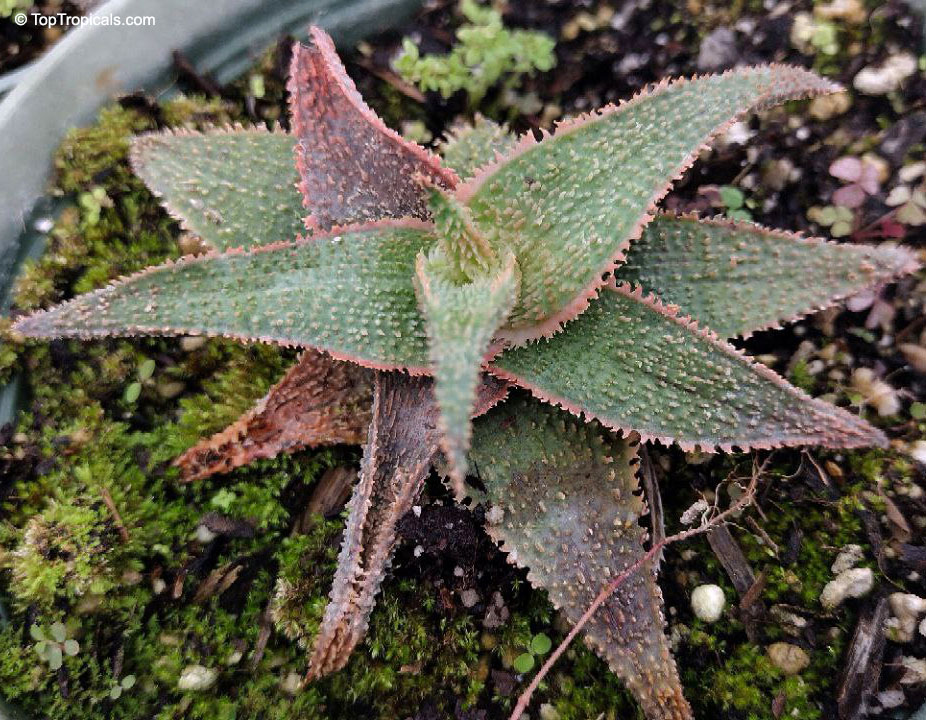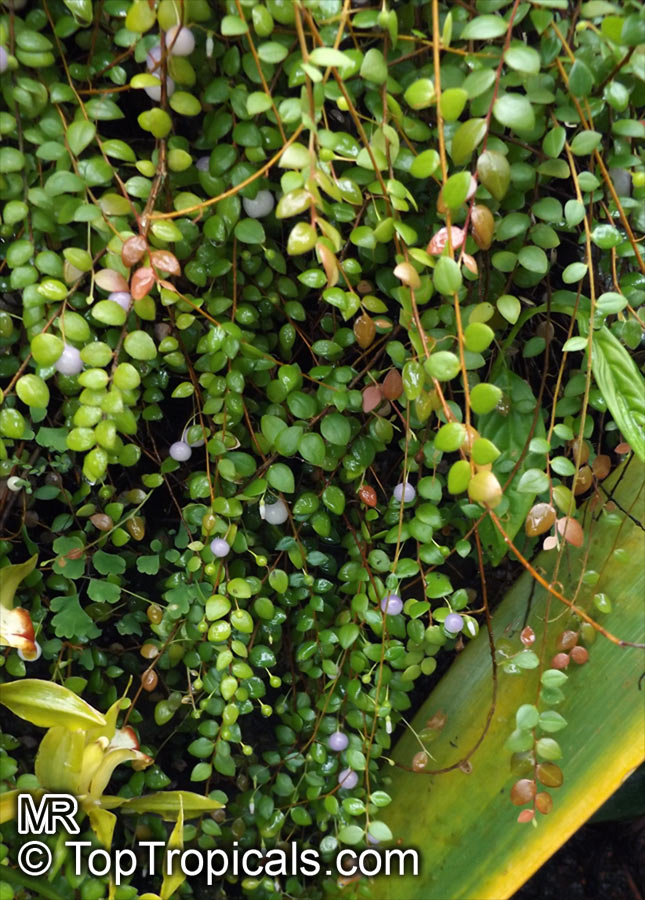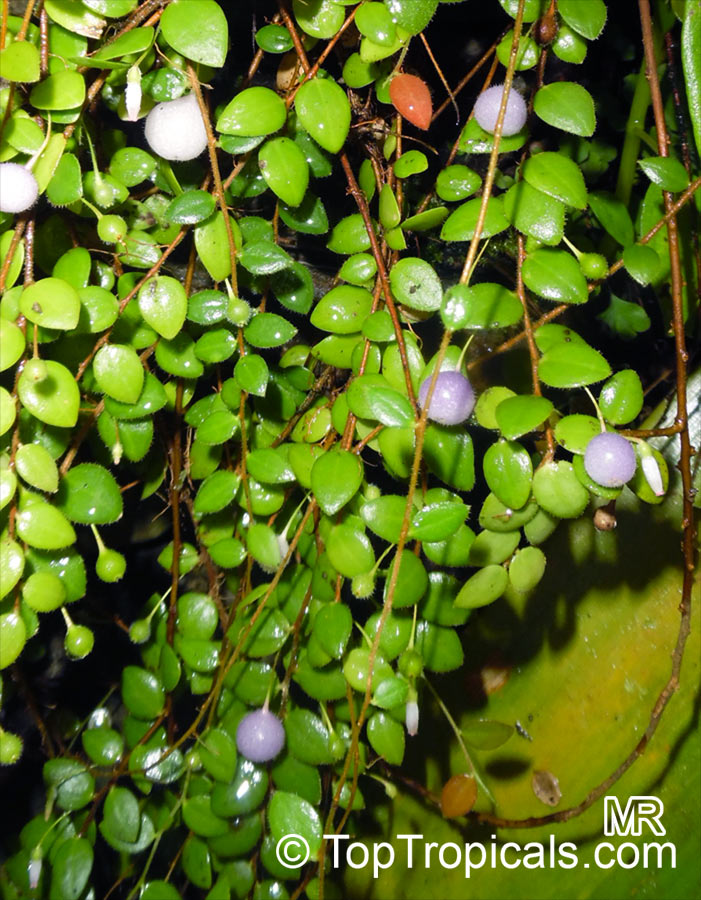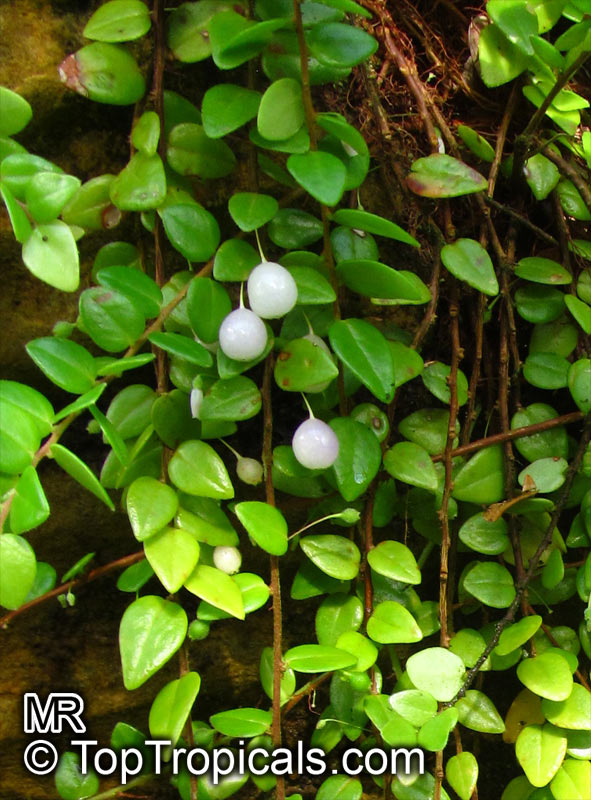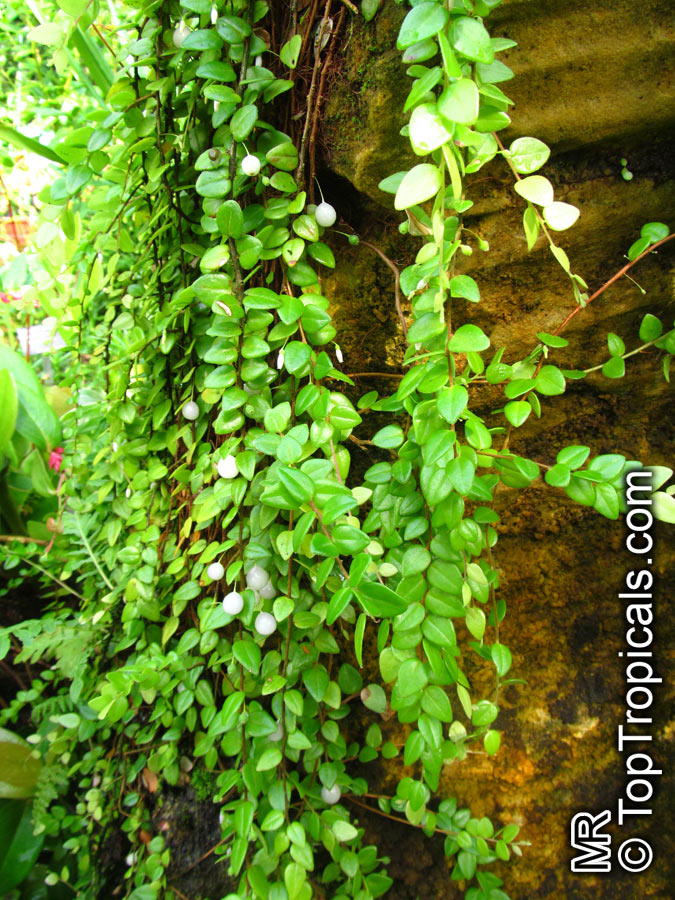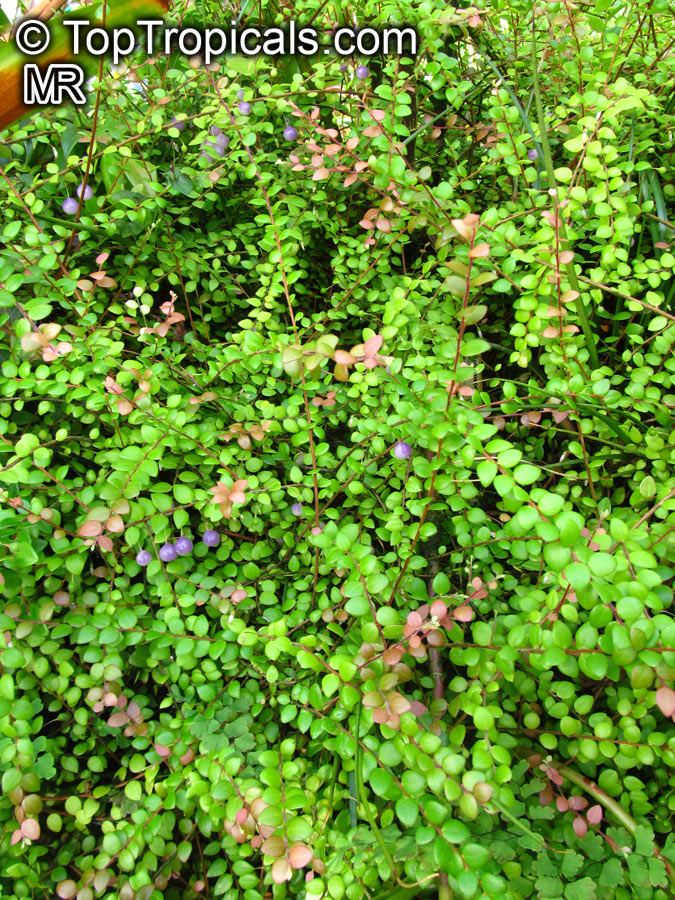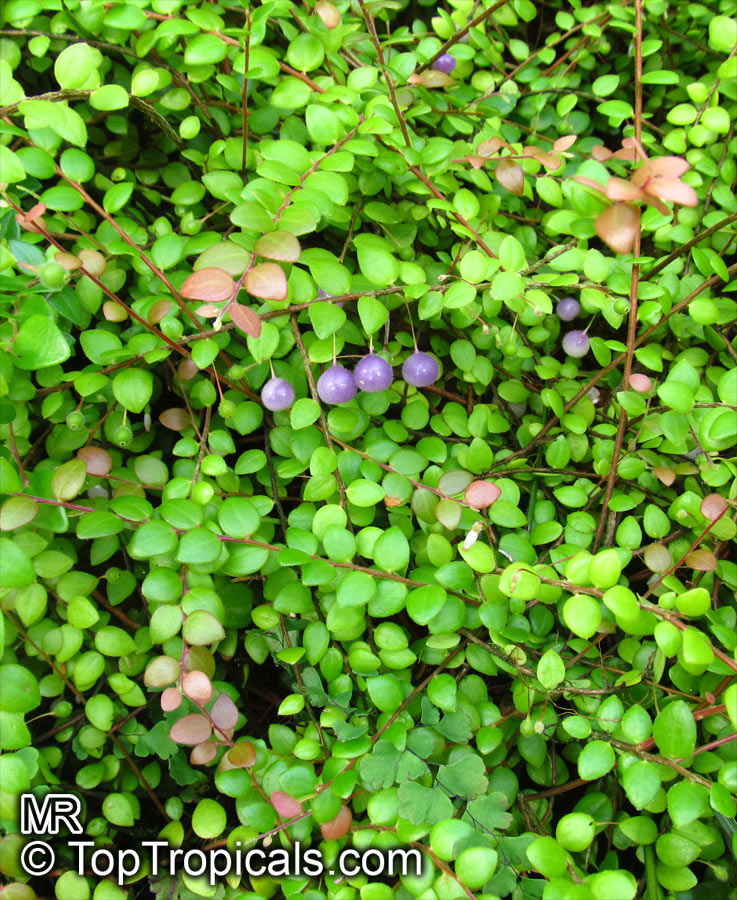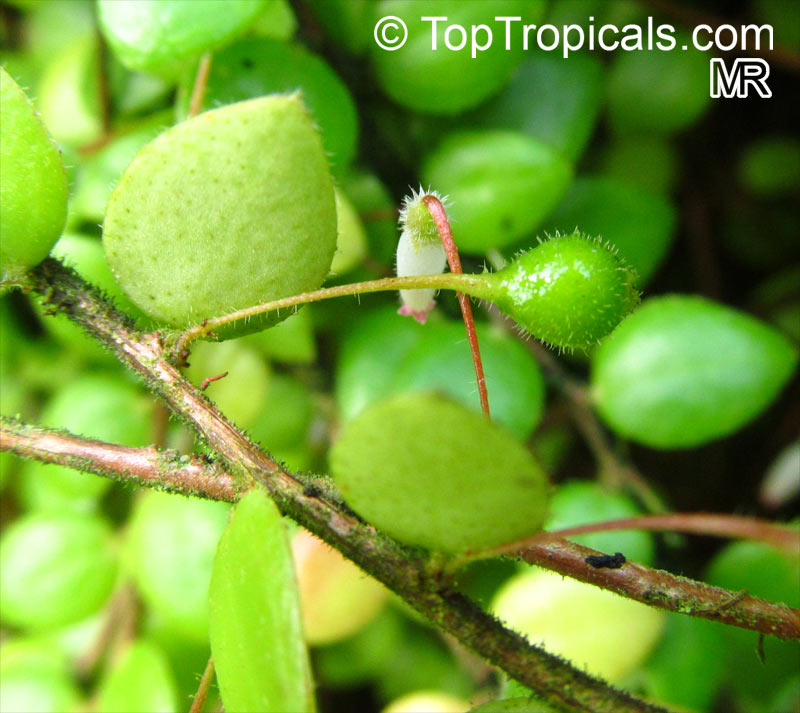Aloe, vera - Plant Encyclopedia Results
Top Tropicals Plant Encyclopedia
| Number of plants found: 3 |
Botanical names: Aloe vera, Aloe barbadensis
Common names: Chinese Aloe, Indian Aloe, True Aloe, Barbados Aloe, Burn Aloe, First Aid Plant
Family: Asphodelaceae (Formerly:Xanthorrhoeaceae)
Subfamily: Asphodeloideae
Origin: Arabian Peninsula





The flowers of Aloe vera are yellow, orange, or red and bloom in summer. The plants are noted for their medicinal properties and have been used for centuries for treating skin diseases. Aloe vera has long been used in folk medicine for ethnomedical properties and is found in many cultures. Aloe vera also has cosmetic applications, being added to skin lotions, soap, and other beauty products.
Aloe vera is an easy-to-grow plant, requiring full sun and moderate water. A small shrub, it grows to a height of 2-5 feet with sharp, succulent leaves. It is a low-maintenance plant, needing minimal care across all climates. Aloe vera is hardy in USDA zones 8-11
When grown in a pot, Aloe vera requires infrequent watering and can tolerate short intervals of drought. The soil should be well-drained and allowed to dry out between waterings. Fertilizers aren't always necessary, but if added, should be applied to the soil once every few months. Winter care for Aloe vera should include protection from extreme cold weather and a slightly reduced watering schedule. To further protect from winter temperatures, you can move potted plants indoors, keeping in a sunny window or under grow lights.
Botanical name: Aloe sp.
Common name: Aloe
Family: Asphodelaceae (Formerly:Xanthorrhoeaceae)
Subfamily: Asphodeloideae
Origin: Africa, Madagascar and The Arabian Peninsula
Hardiness: 30°F














They range in size from little one inch miniatures to massive plant colonies consisting of hundreds of 2 foot diameter plants. Although most Aloes have some medicinal or commercial value, the most commonly known is the Aloe barbadensis... better known as Aloe vera. All Aloes are semitropical succulent plants, and may only be grown outdoors in areas where there is no chance of freezing (USDA zones 10-11). However, they make excellent house plants when they are given sufficient light. Potted Aloes benefit from spending the summer outdoors. Older specimens may even bloom, producing a tall stock covered with bright colored coral flowers. Aloe flower nectar is a favorite of hummingbirds! The medicinal properties of Aloe vera have been known, and recorded since biblical times. It has been used for a variety of ailments, and as an ointment for burns, cuts, and rashes, as well as an ingredient in various beauty preparations. The sap of the Aloe is a thick, mucilaginous gel. It is this gel which is used medicinally. Because Aloe plants consist of 95% water, they are extremely frost tender. If they are grown outdoors in warm climates, they should be planted in full sun, or light shade. The soil should be moderately fertile, and fast draining. Established plants will survive a drought quite well, but for the benefit of the plant, water should be provided. During the winter months, the plant will become somewhat dormant, and utilize very little moisture. During this period watering should be minimal. Allow the soil to become completely dry before giving the plant a cup or two of water. During the summer months, the soil should be completely soaked, but then be allowed to dry again before re-watering. Aloes have a shallow, spreading root system, so when it is time to repot choose a wide planter, rather than a deep one. You may also use a packaged 'cacti mix' soil. Aloes are propagated by removing the offsets which are produced around the base of mature plants, when they are a couple inches tall (or larger). They may also be grown from seed.
Botanical name: Sphyrospermum sp.
Common name: Sphyrospermum
Family: Ericaceae
Origin: South America, Central America






Sphyrospermum sp. is a striking plant native to South America and Central America. It is a unique groundcover and low-growing plant with long pendant stems reaching up to 2ft in length. As it matures it can grow up to a maximum of 5ft tall with thumbnail sized leaves and small pea-sized blue fruits that appear once it has flowered.
In terms of growing Sphyrospermum in your garden there are a few things to bear in mind. It is tolerant of semi-shady conditions and does best with regular watering. However, it cannot withstand cold temperatures so if you live in a cooler area then potting is the way to go. In USDA plant hardiness zones 9-11 it grows particularly well, in a pot or in the ground, as long as it's in a sheltered spot and is protected from frost.
Sphyrospermum is also an ethnomedical plant, used by some South American tribes for a variety of treatments and remedies. The plant is mostly used in topical treatments, mixed with other ingredients such as aloe vera and natural oils.
Overall, Sphyrospermum is a unique, impressive and versatile plant that can be kept in the ground or in a pot depending on the climate. It is a low-maintenance plant that requires semi-shady areas and regular watering, but it is also an ethnomedical plant that offers a variety of treatments and remedies.
Use link to repeat this search:
https://toptropicals.com/cgi-bin/garden_catalog/cat.cgi?find=Aloe vera&search_op=and&keyword_op=and&language=e&number=10
&no_change_lang=1&user=tt&sale=1&first=0
